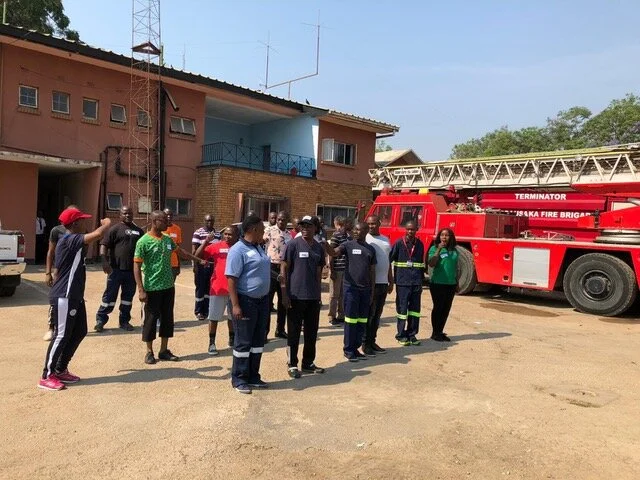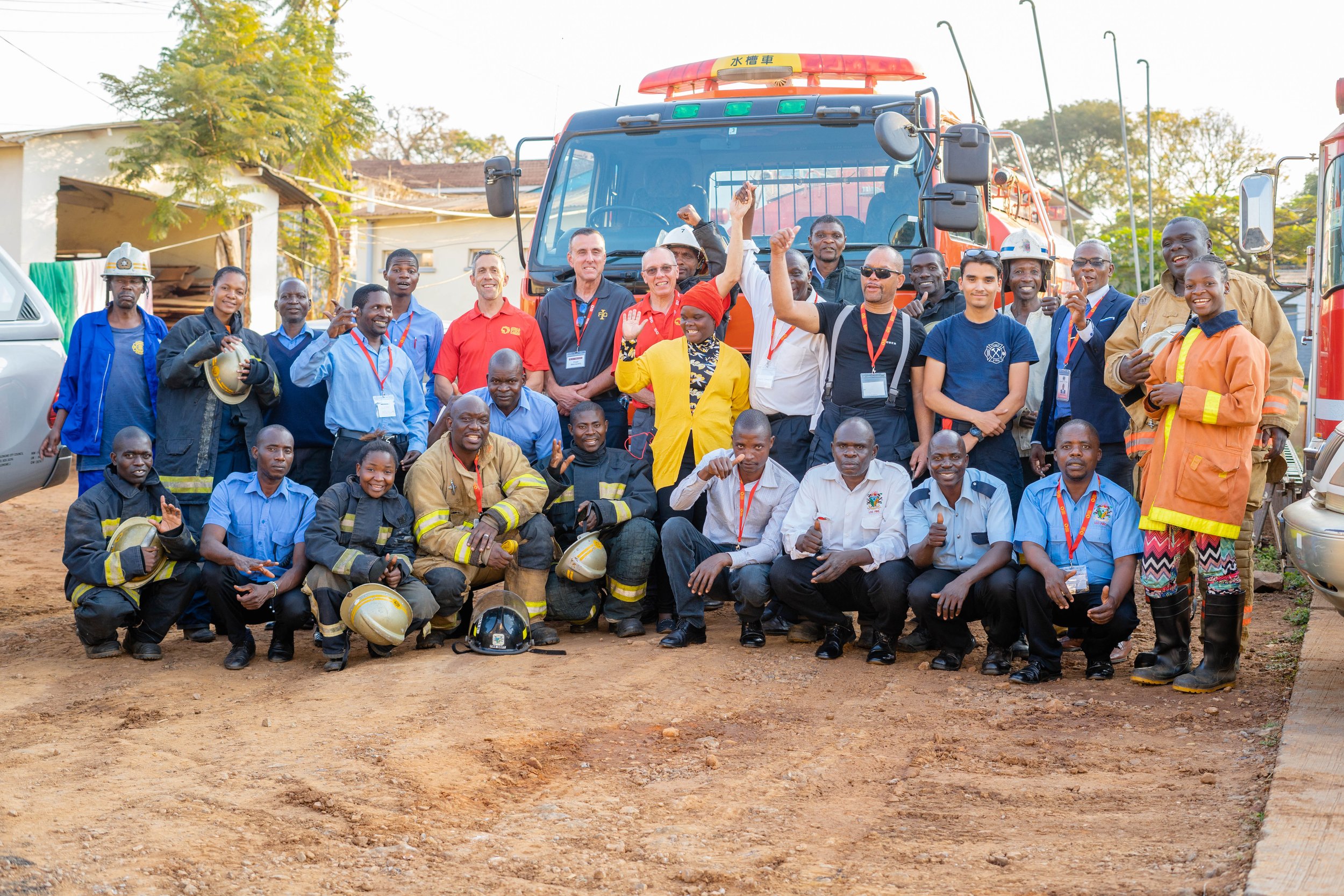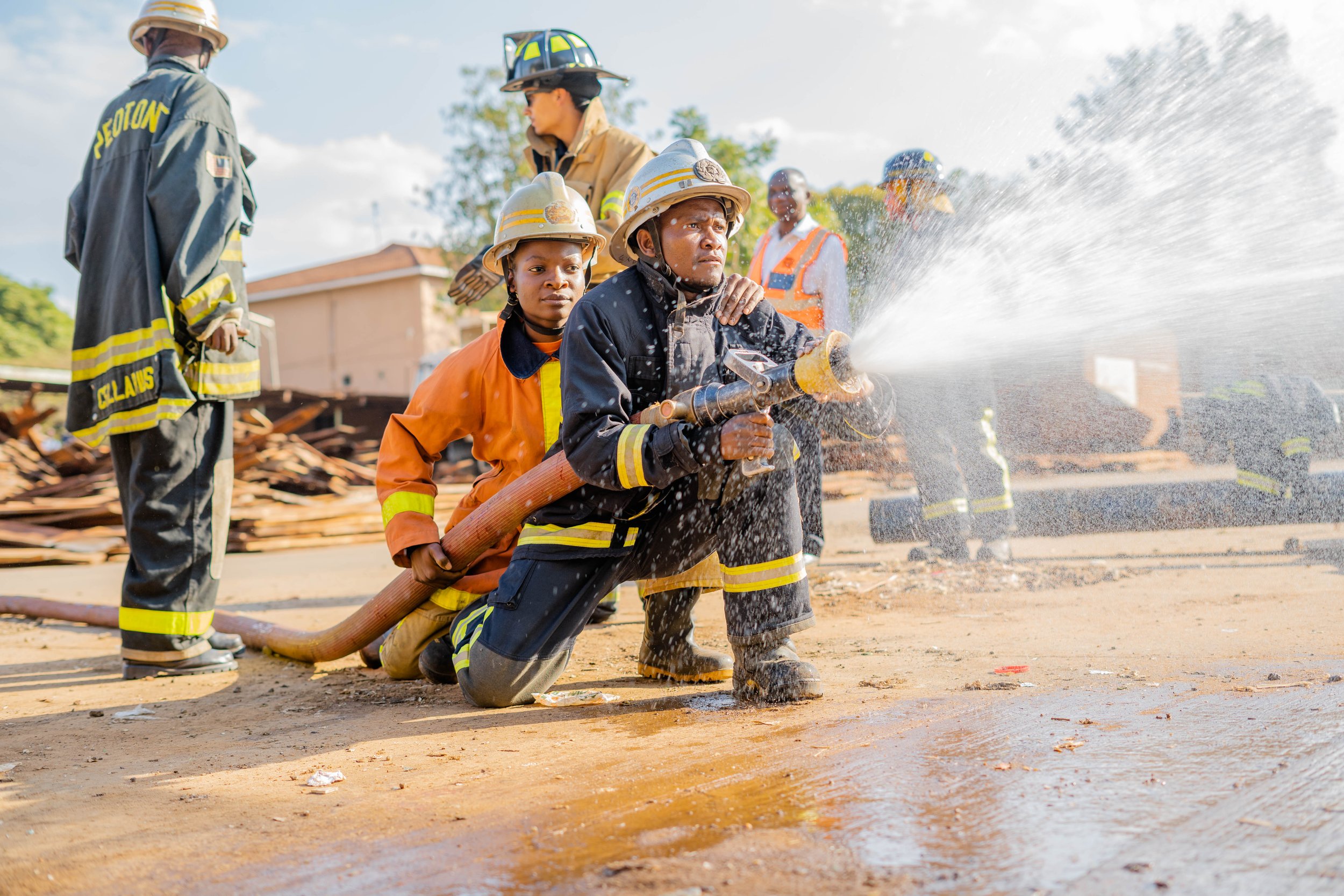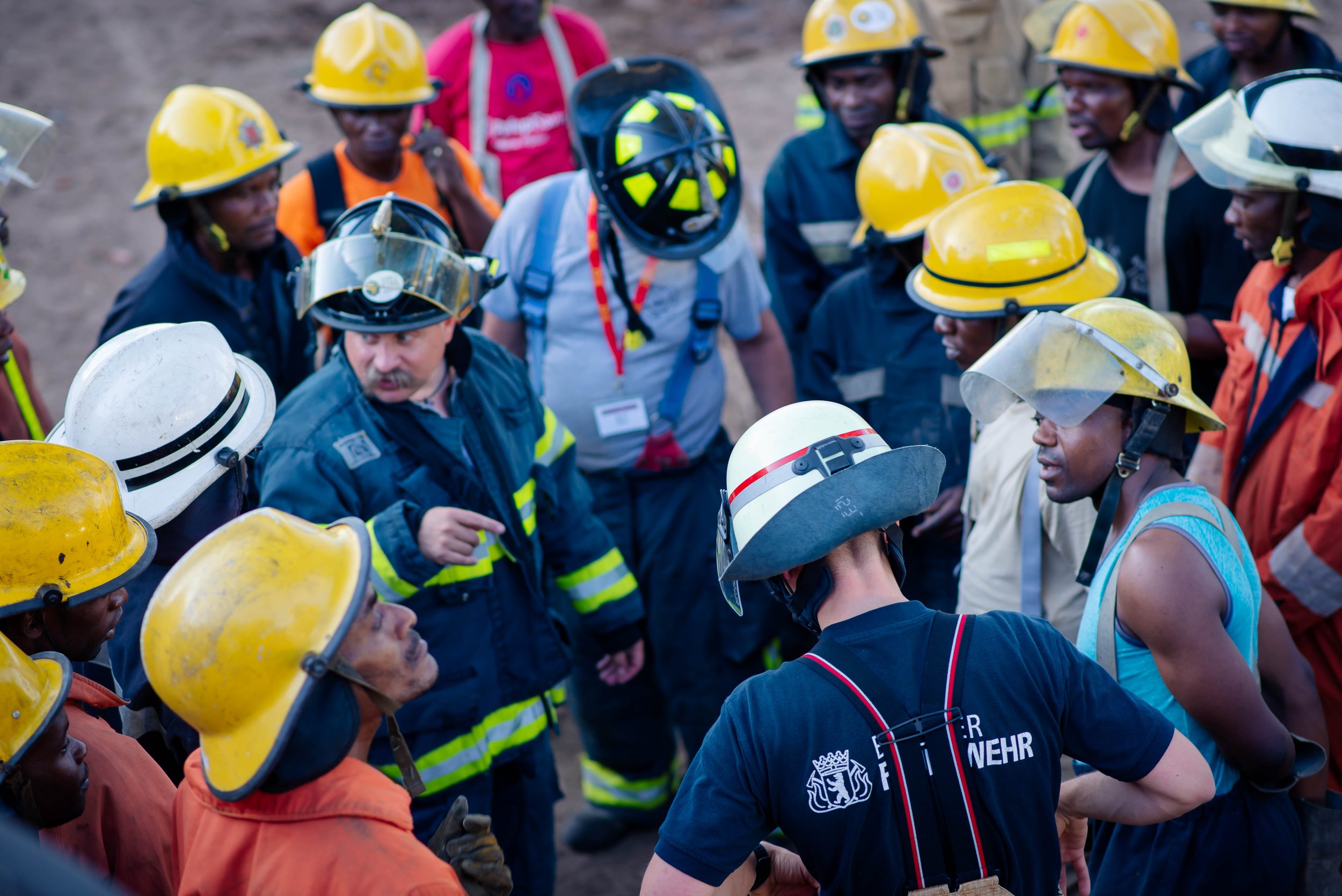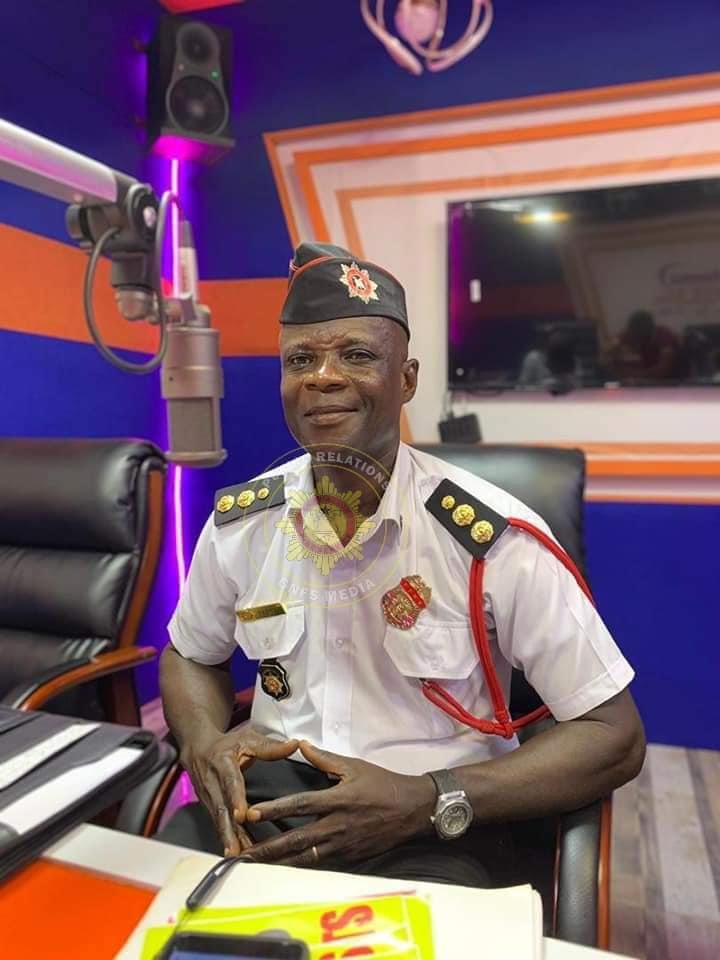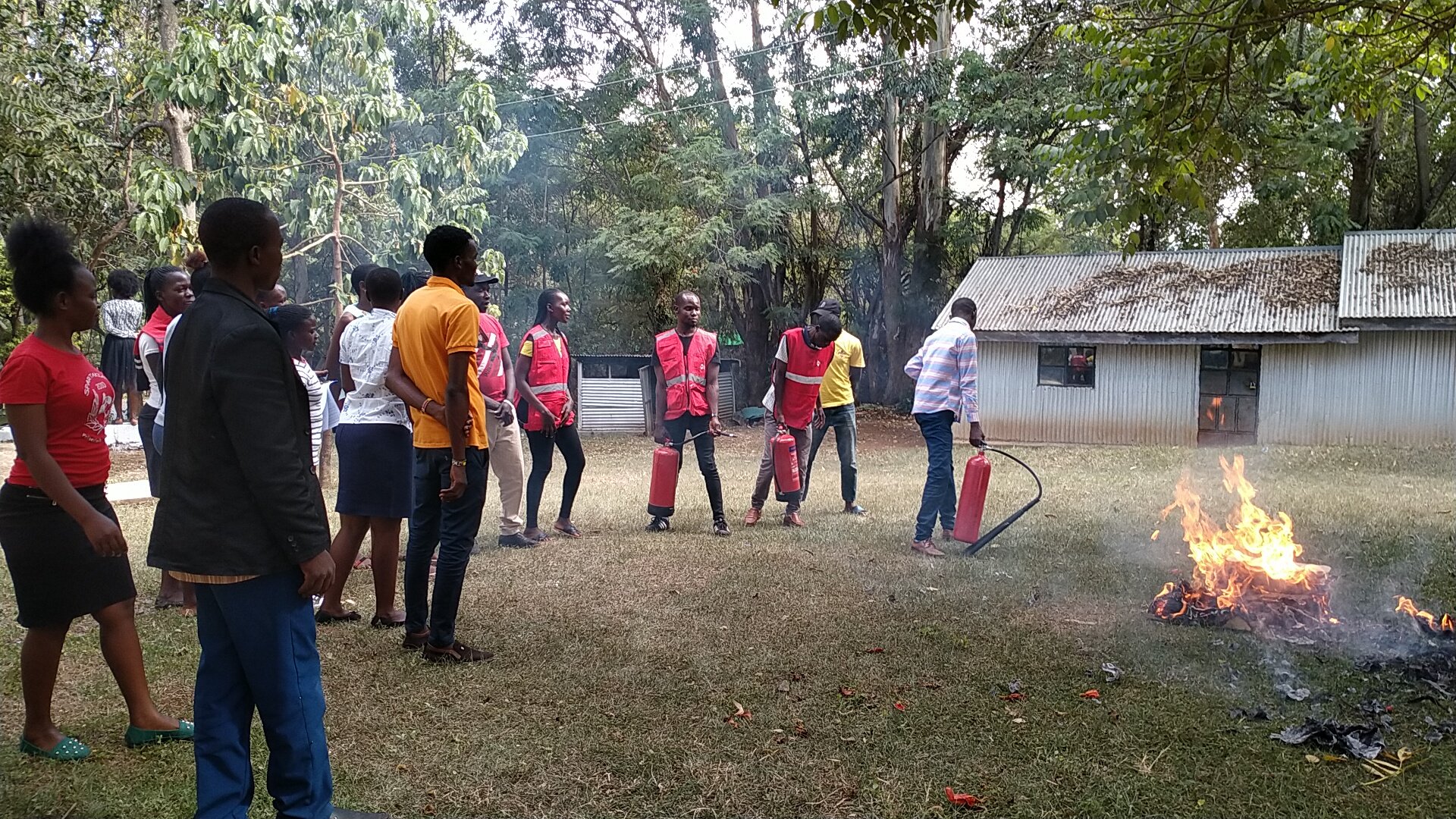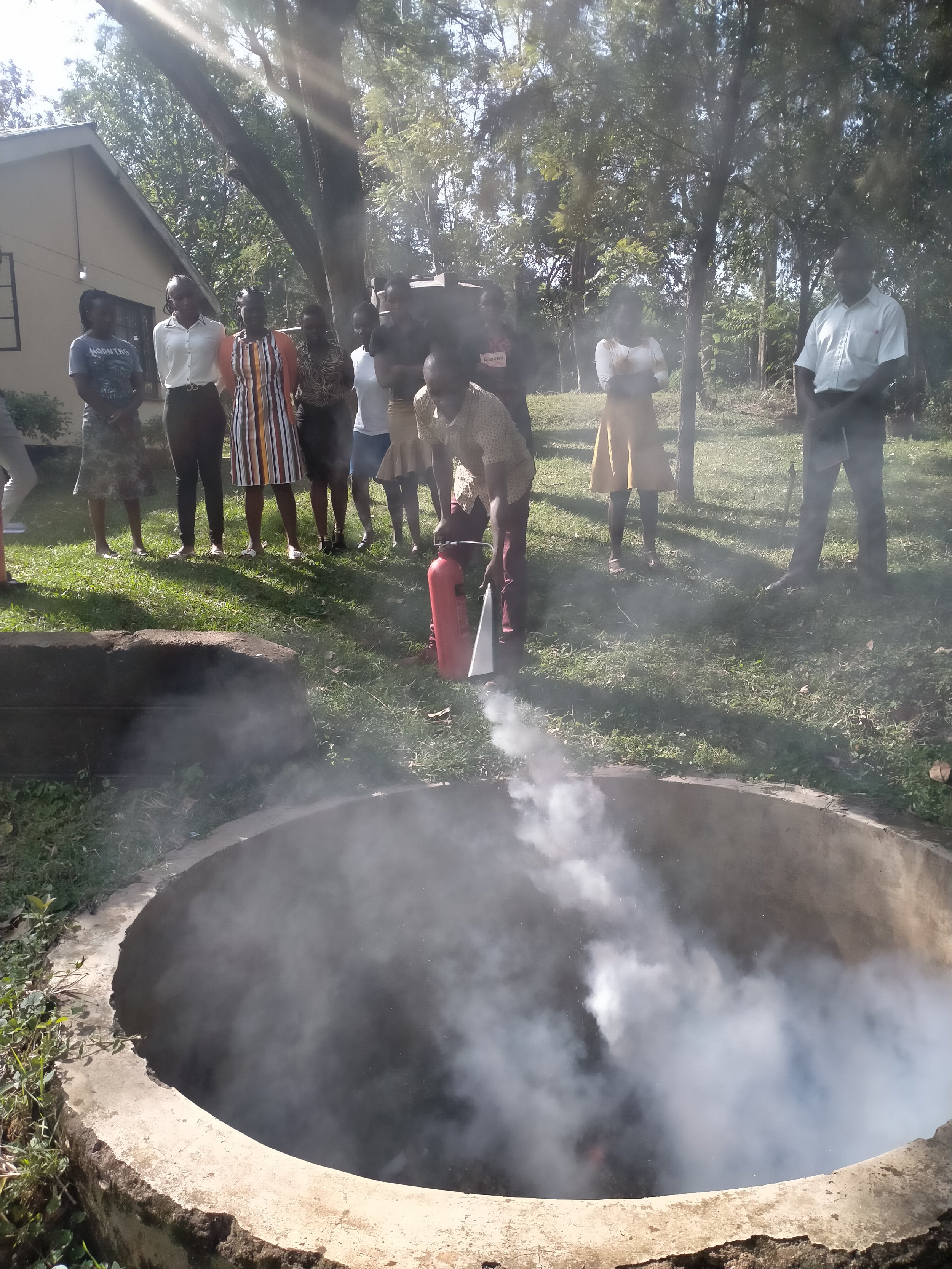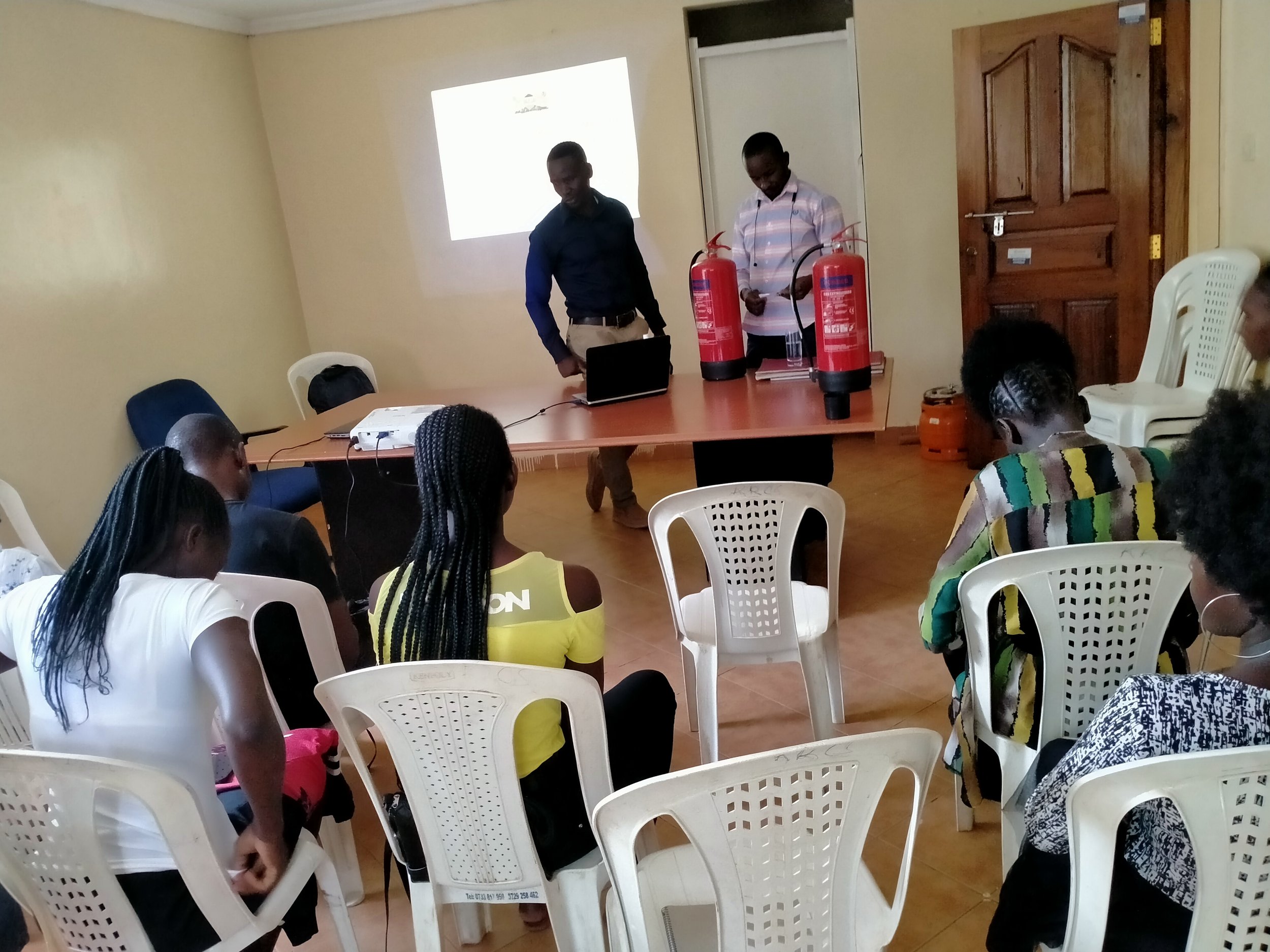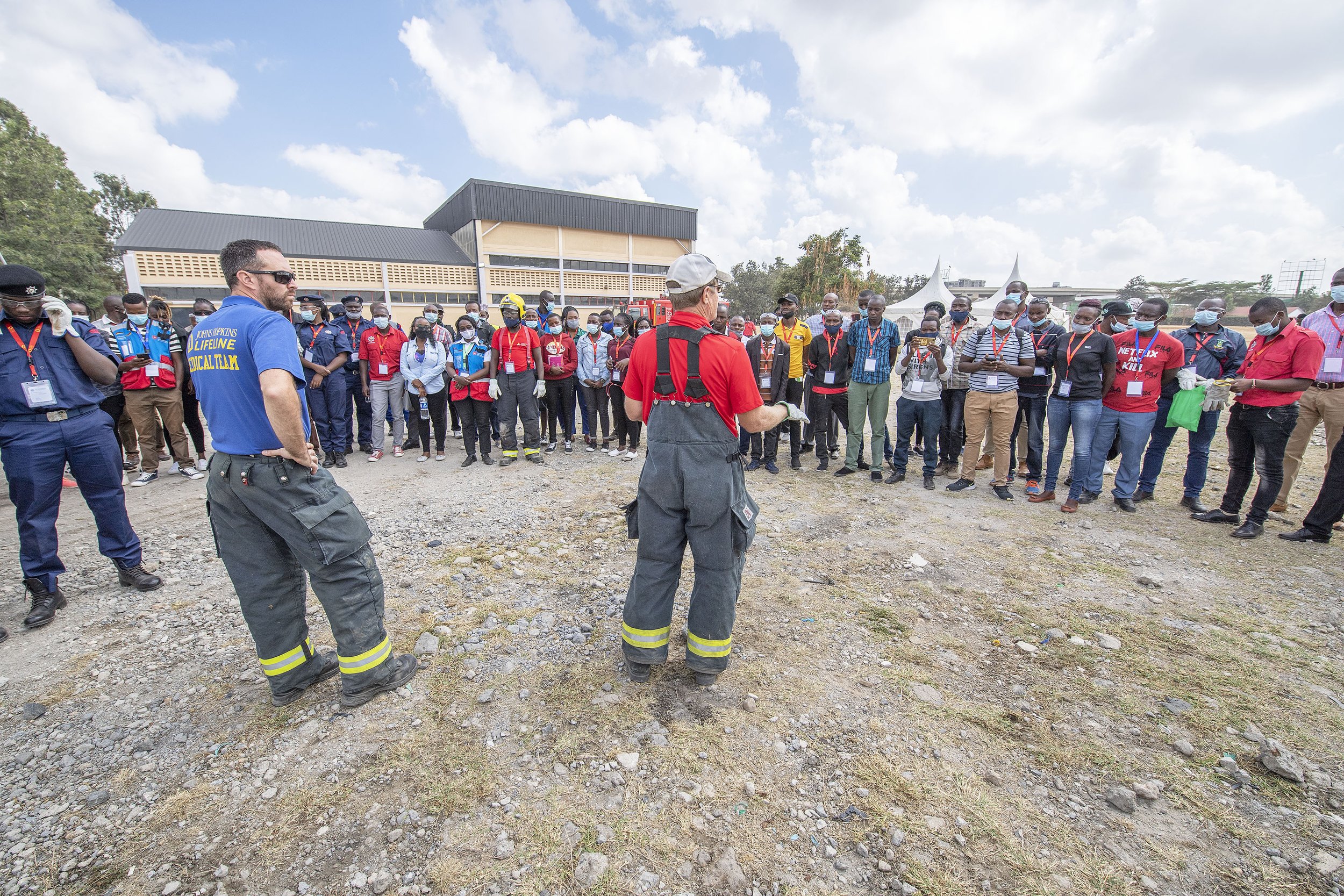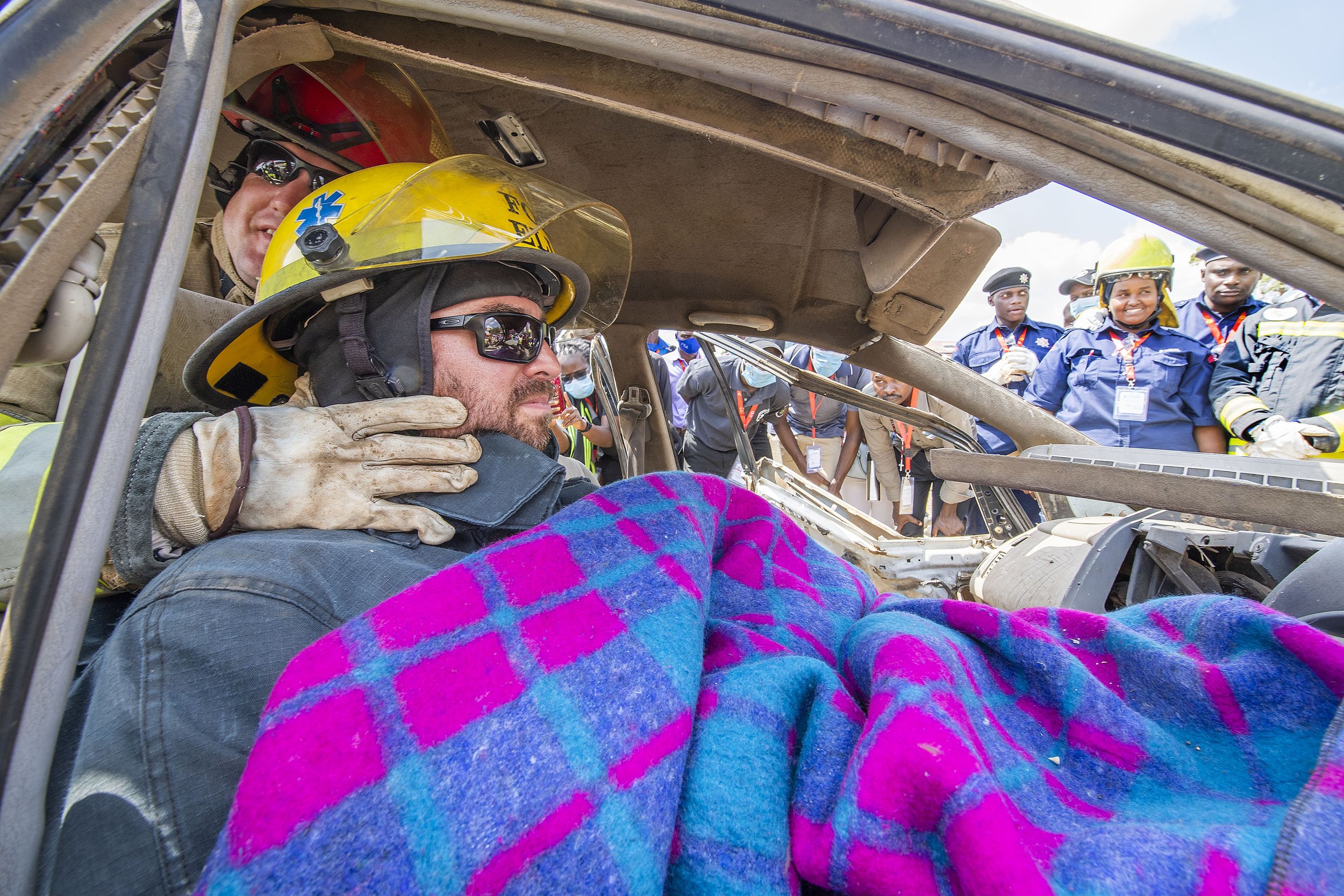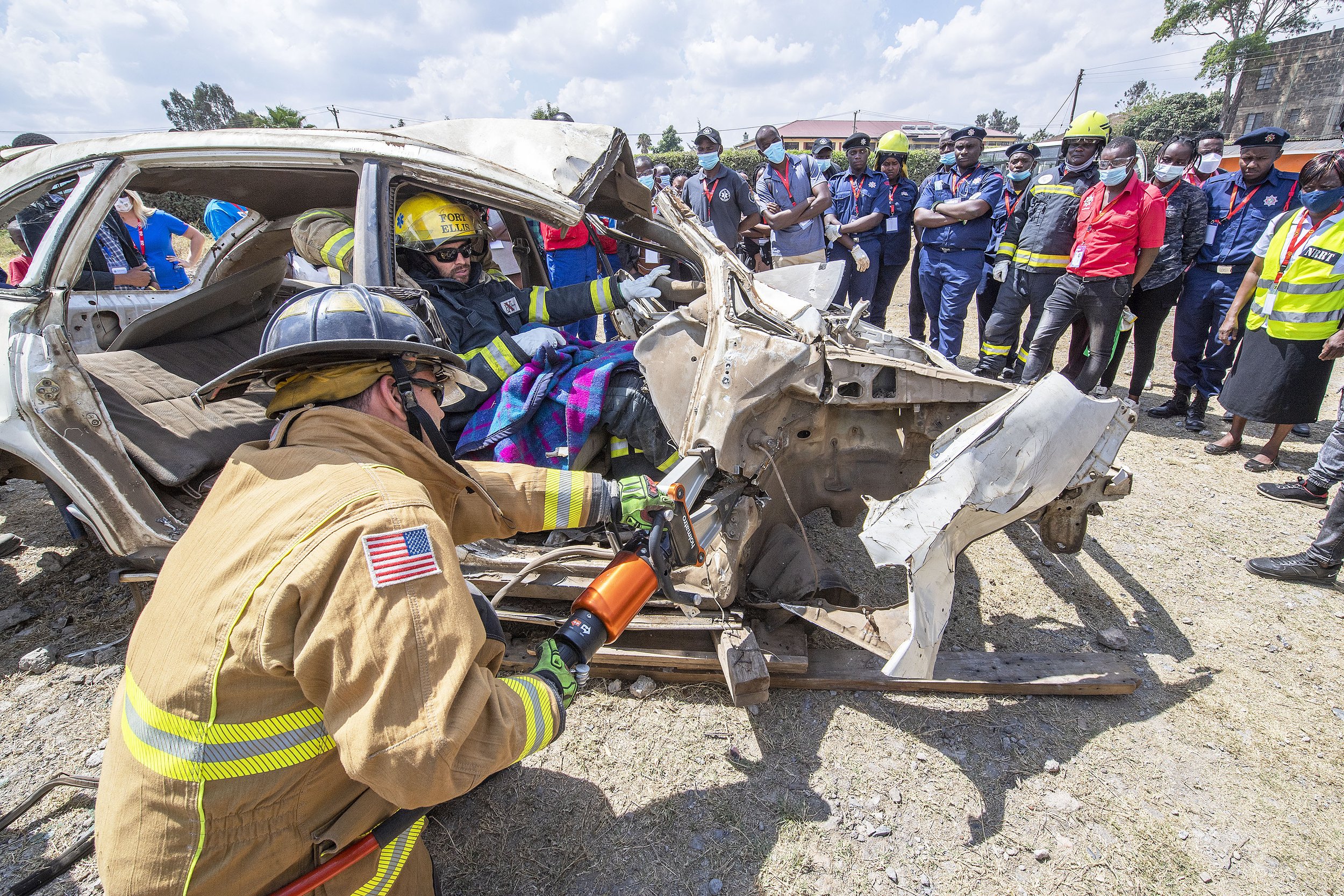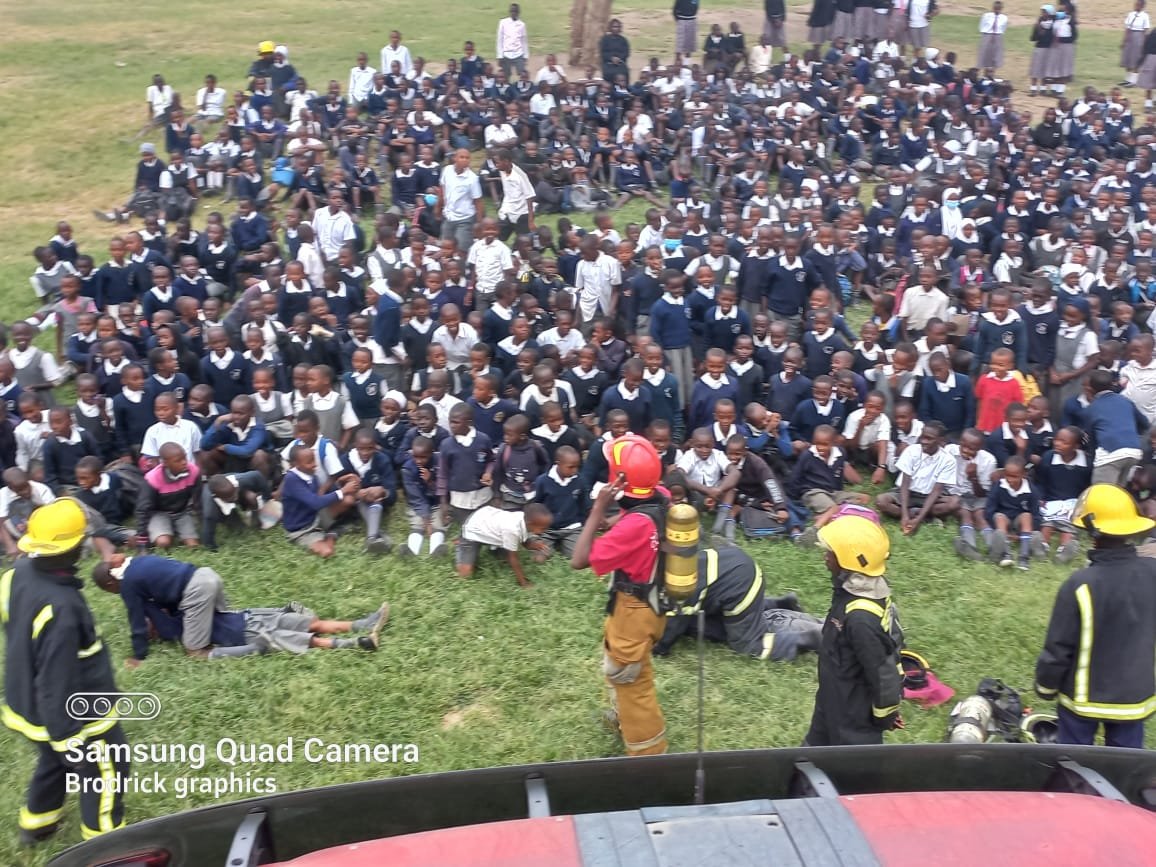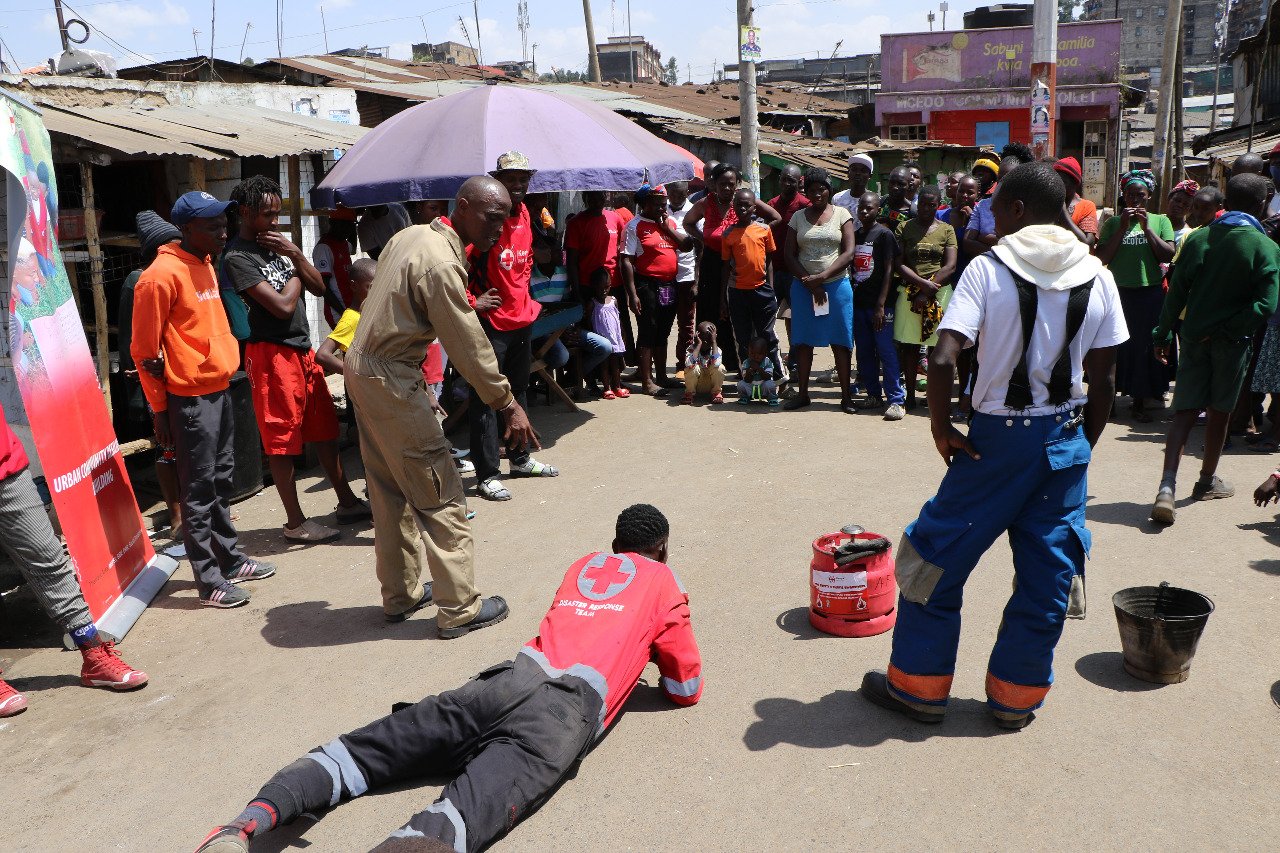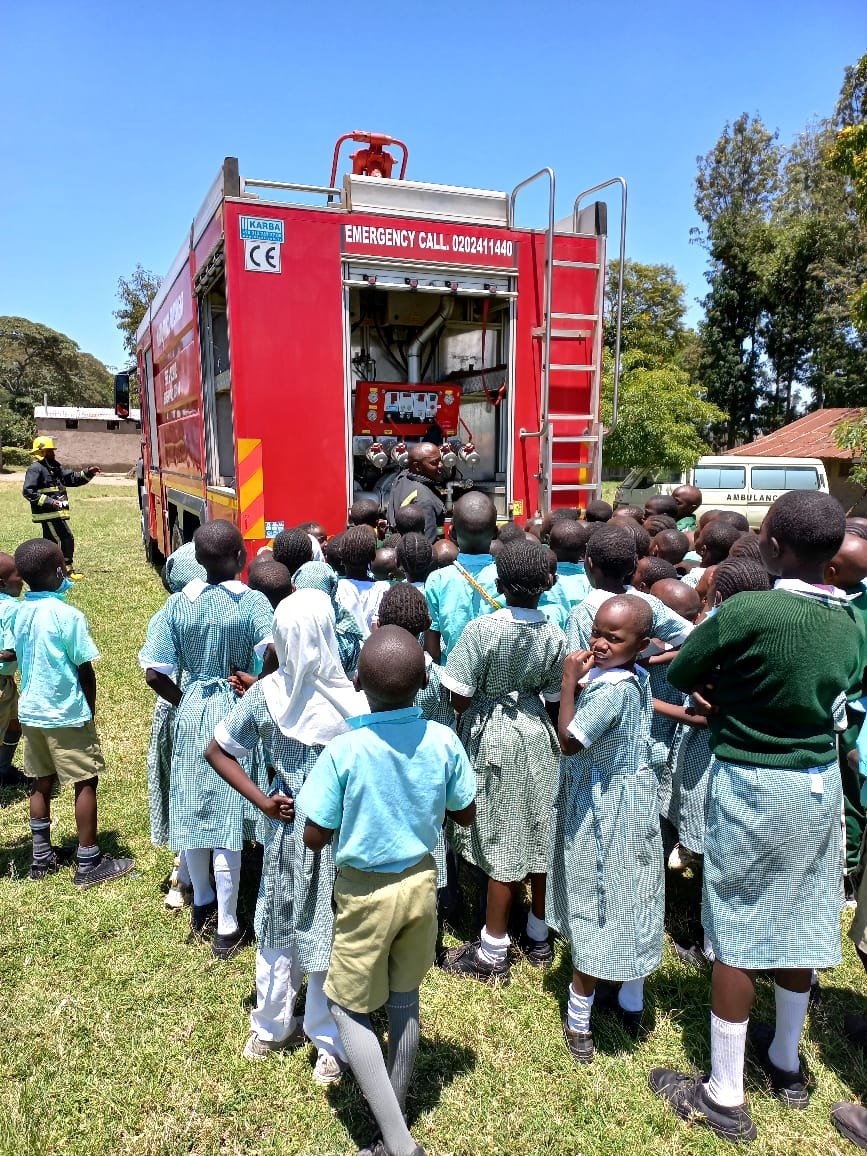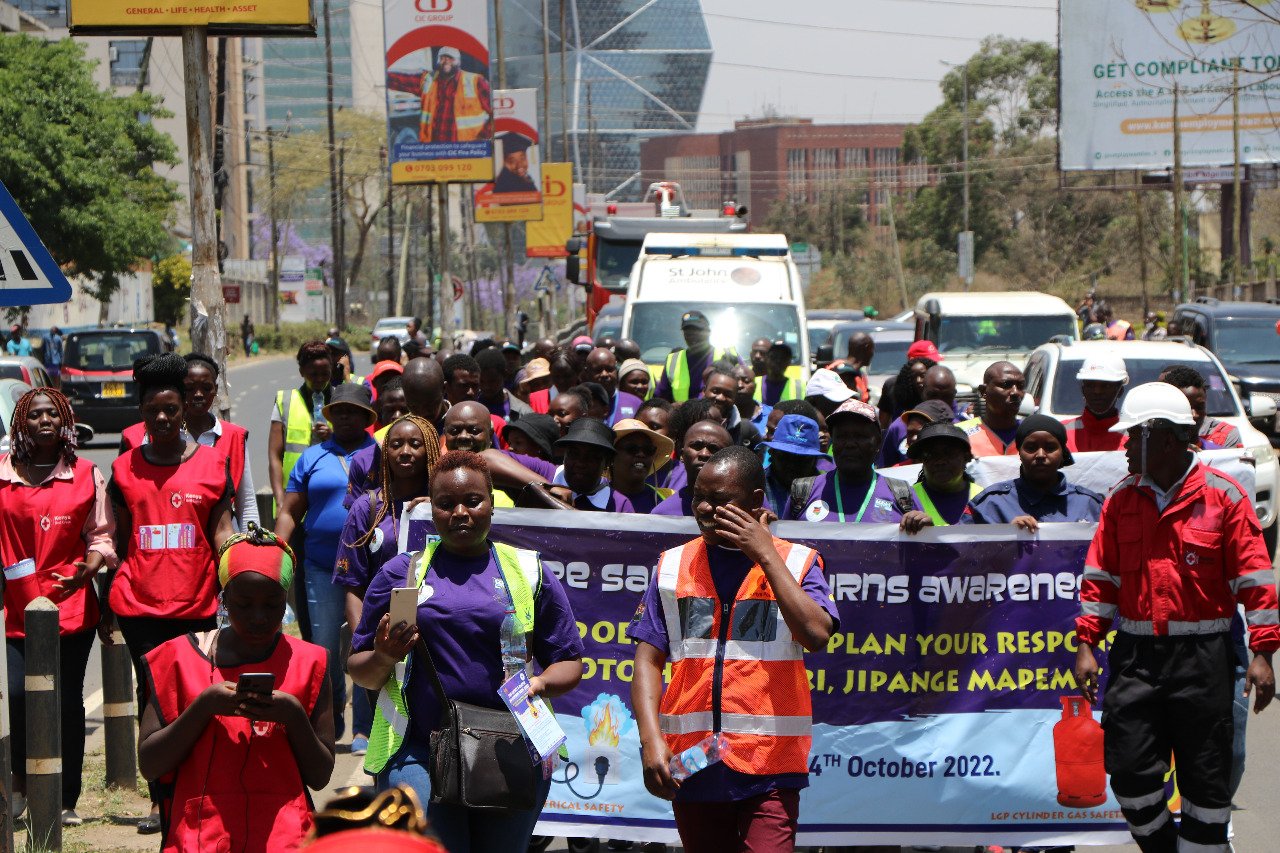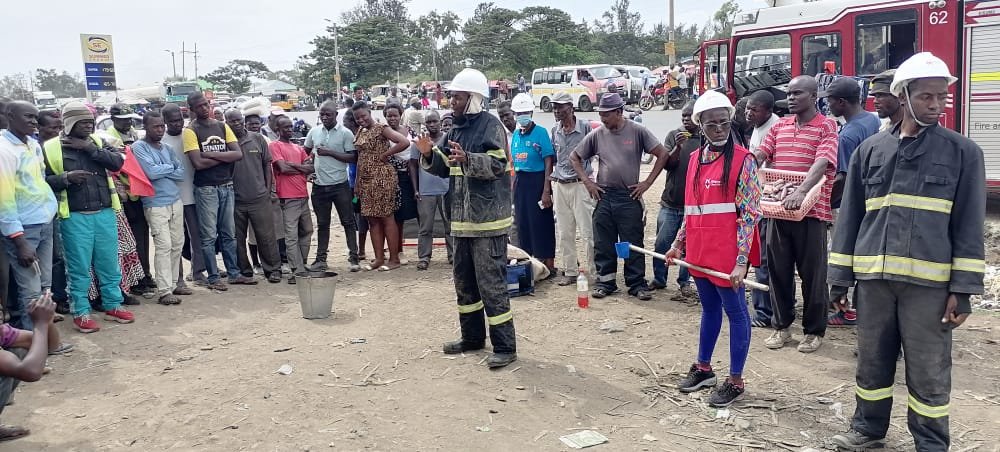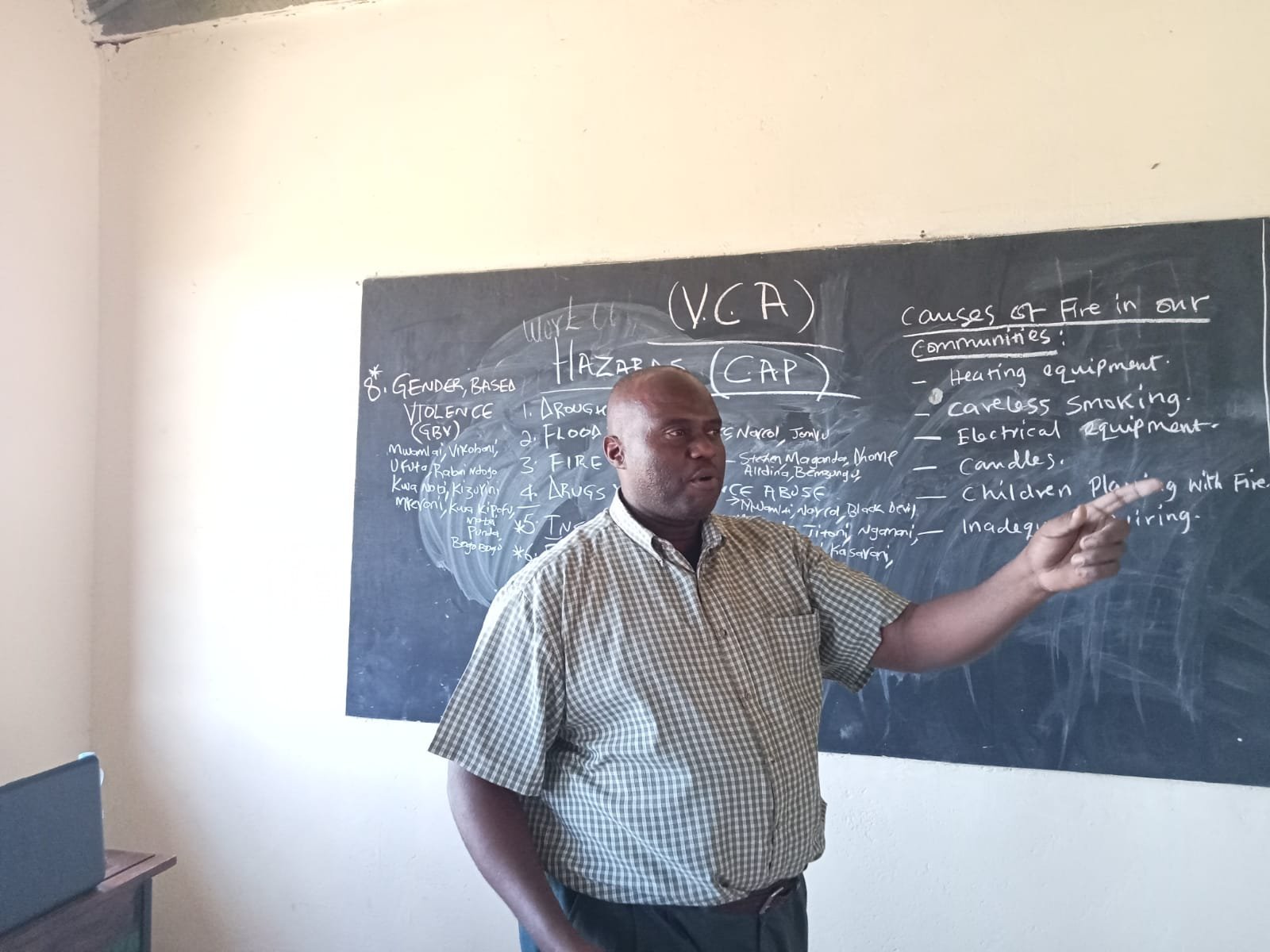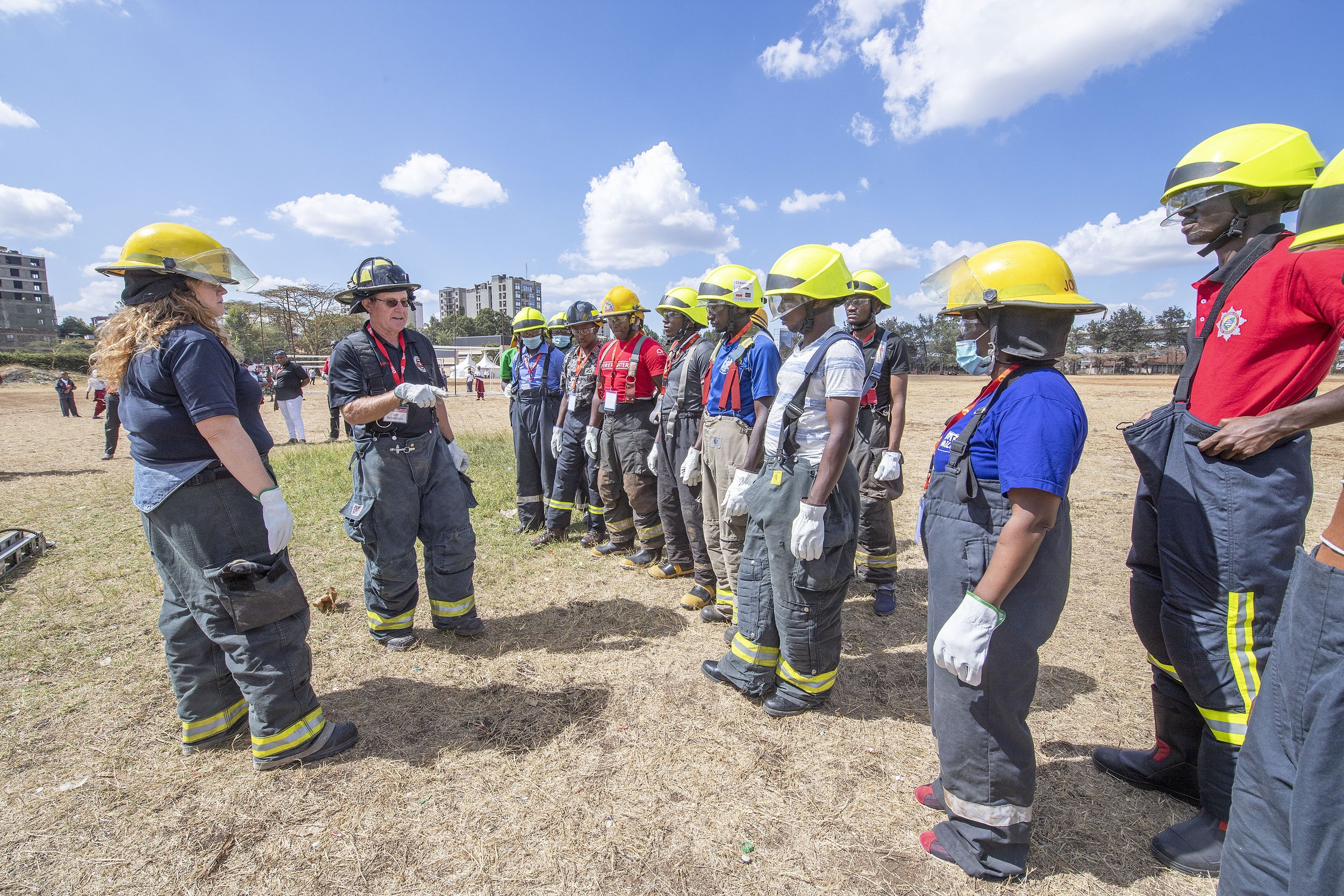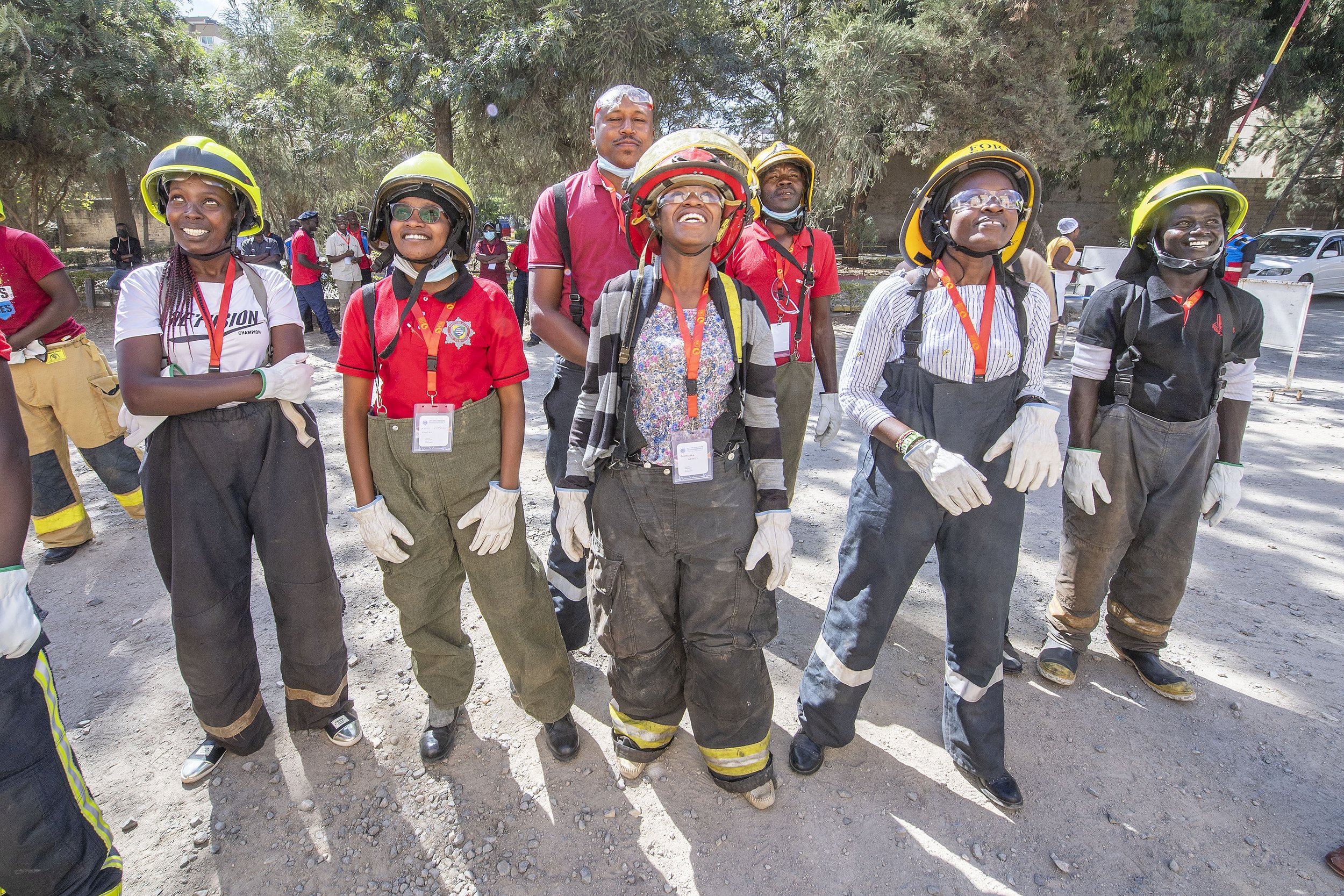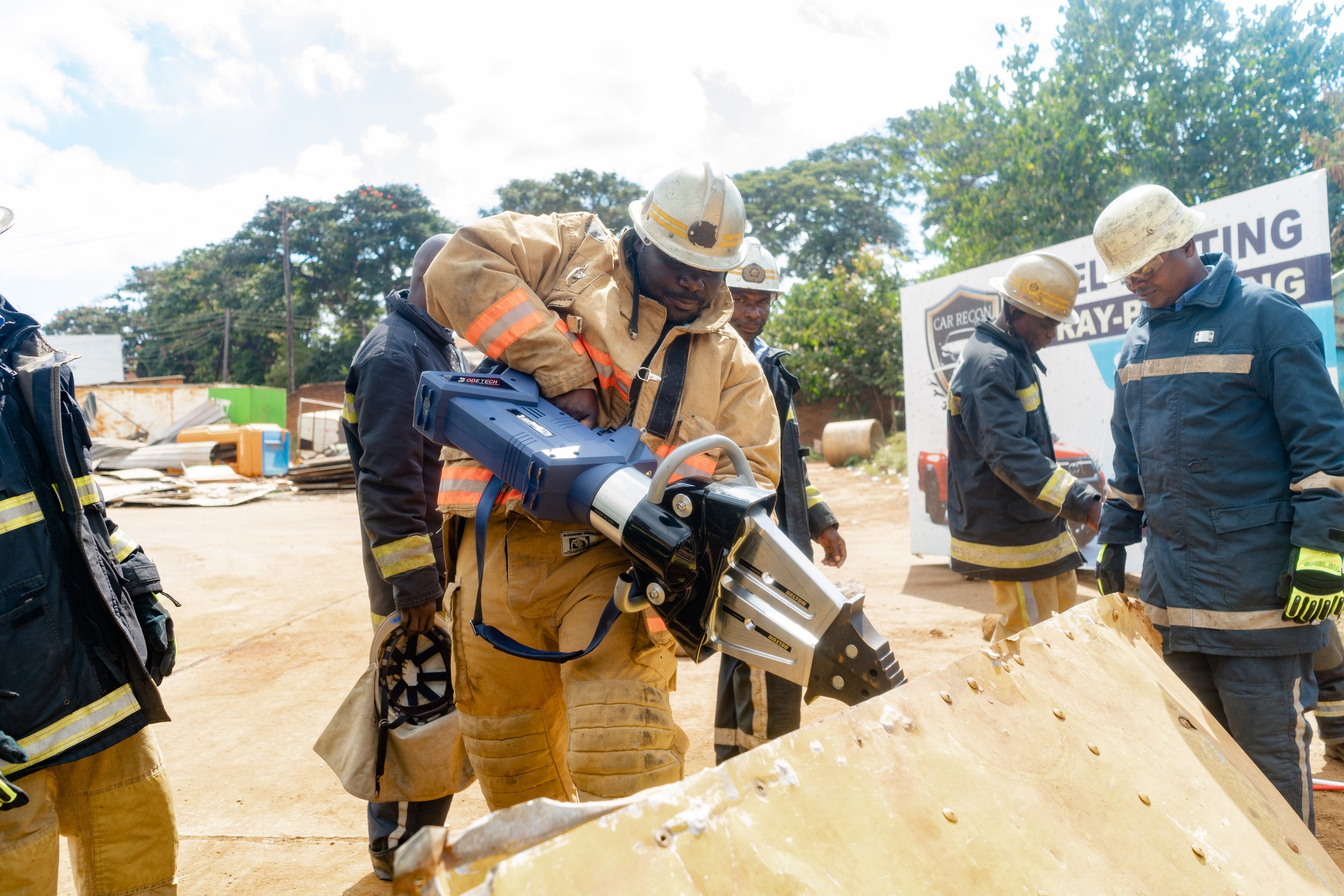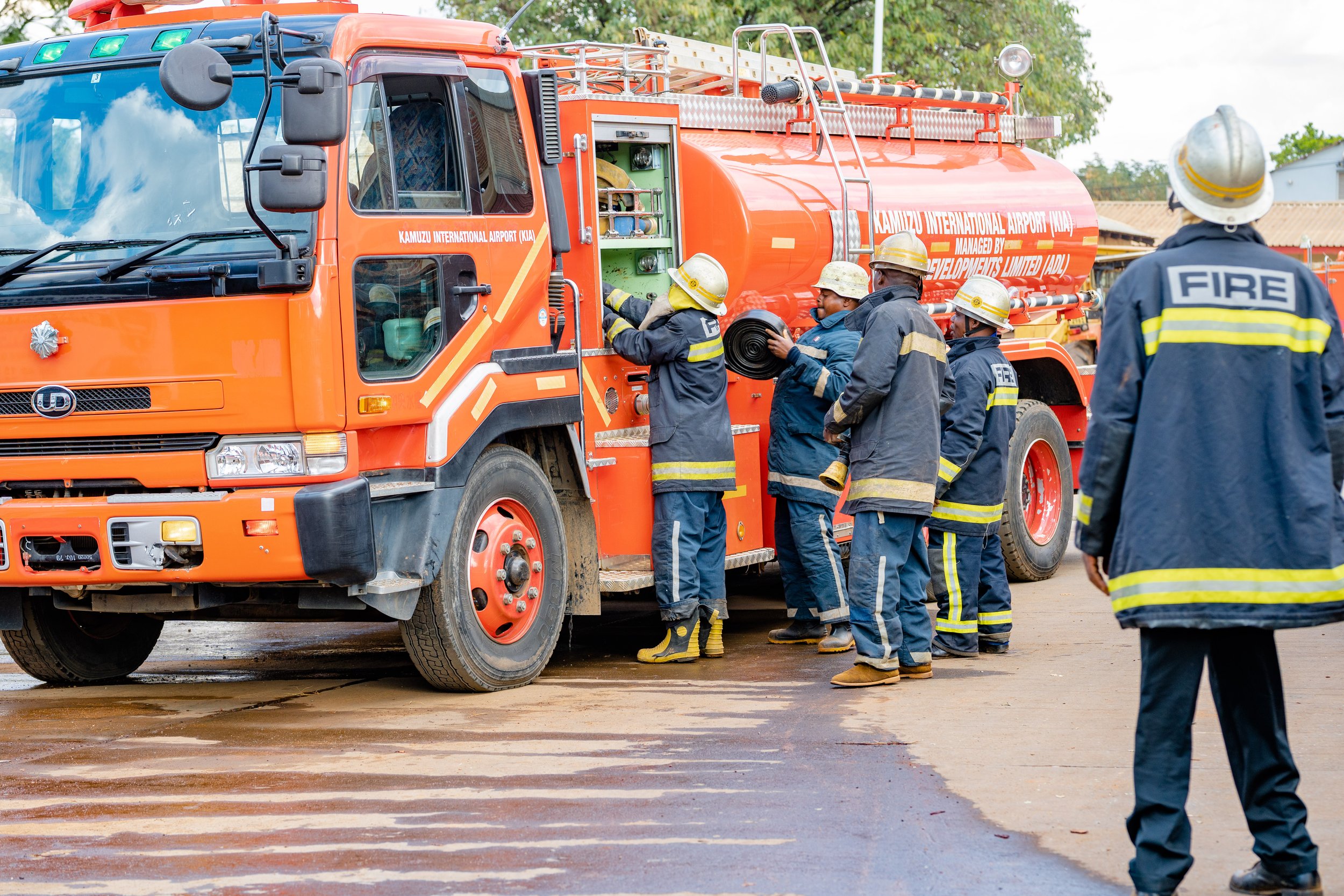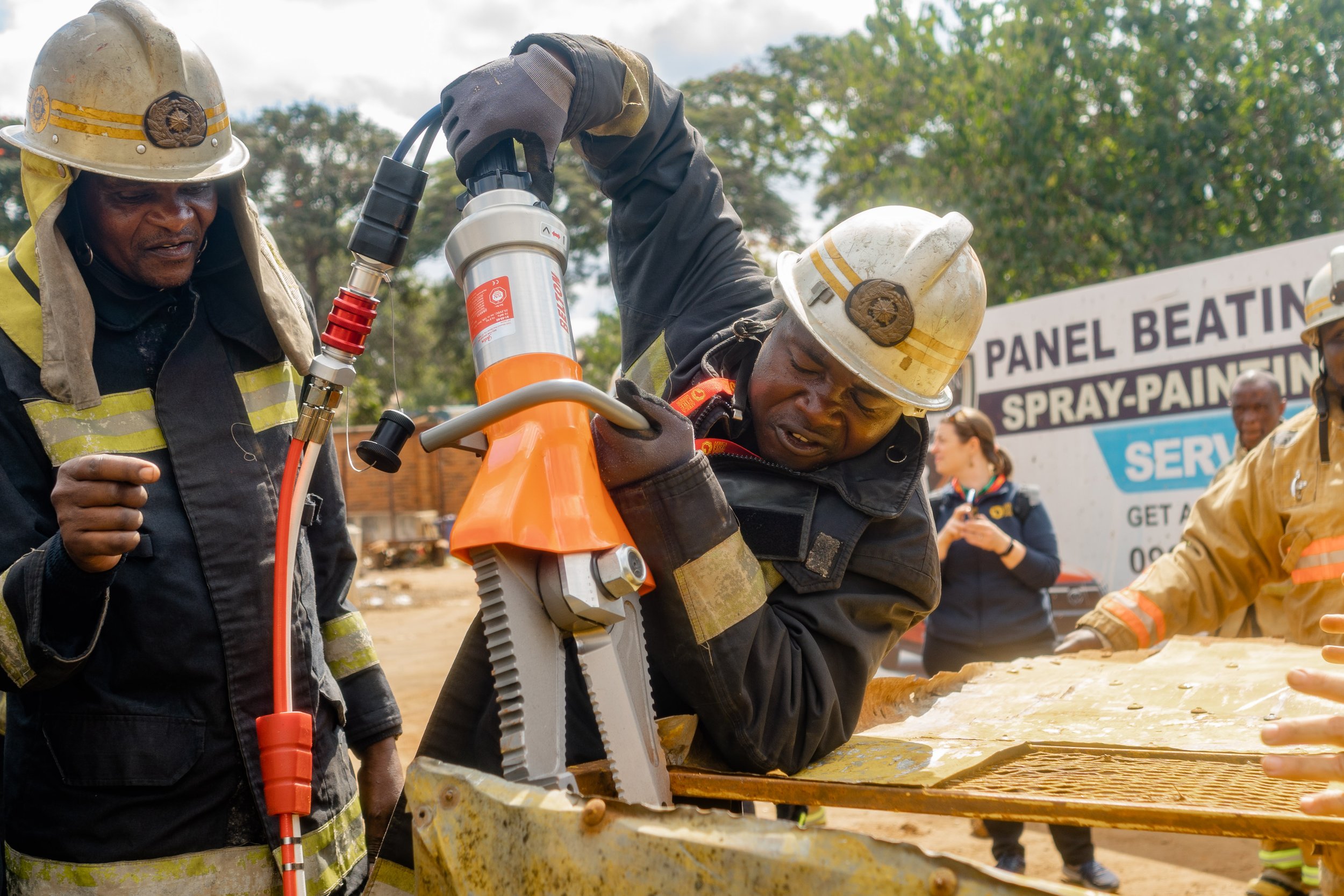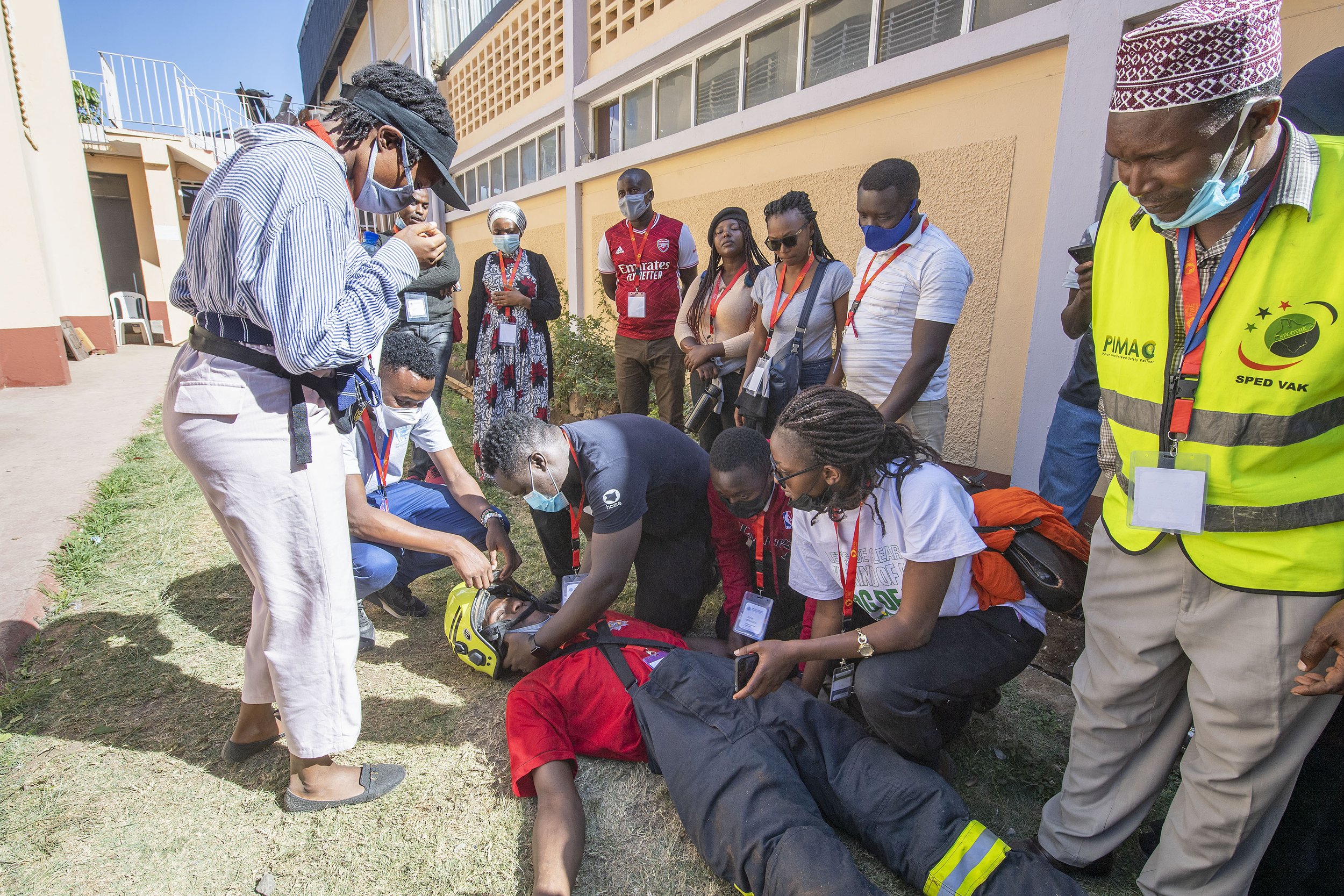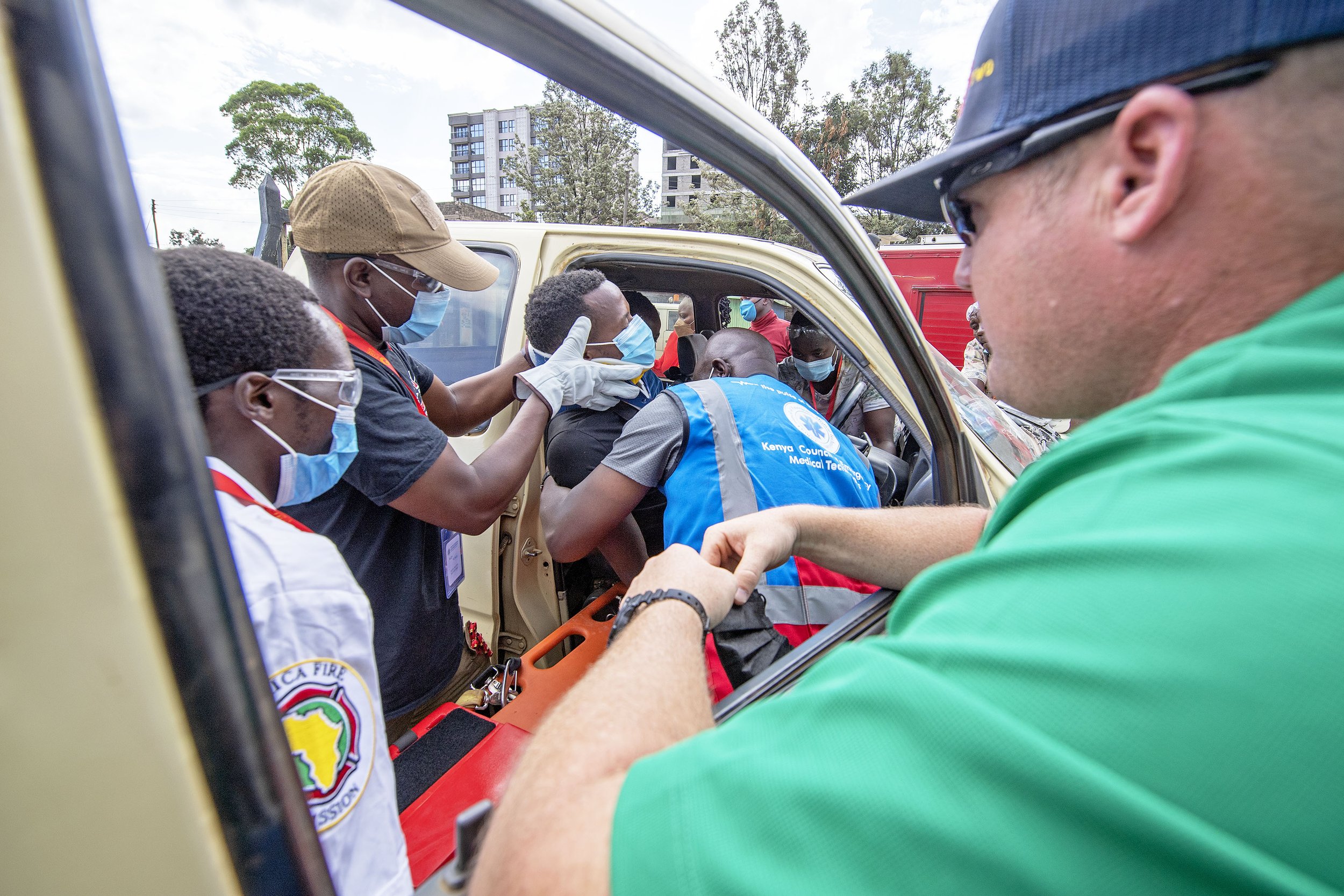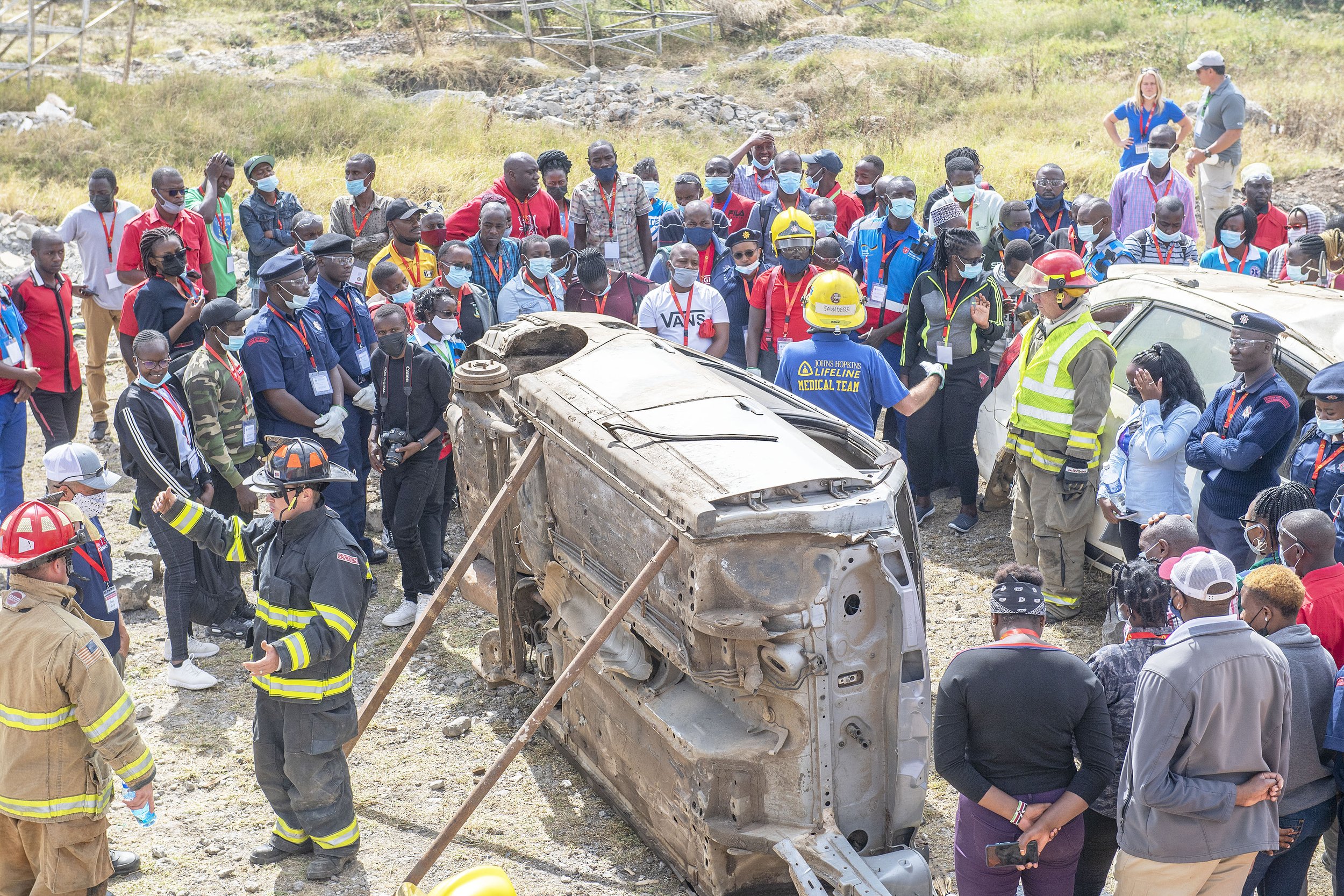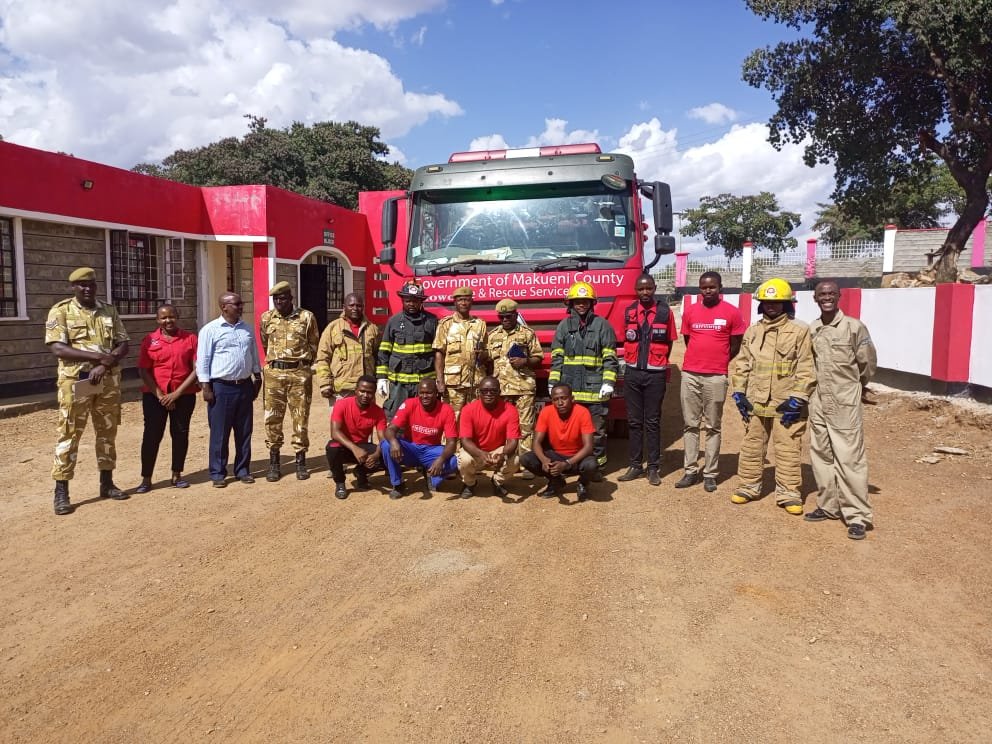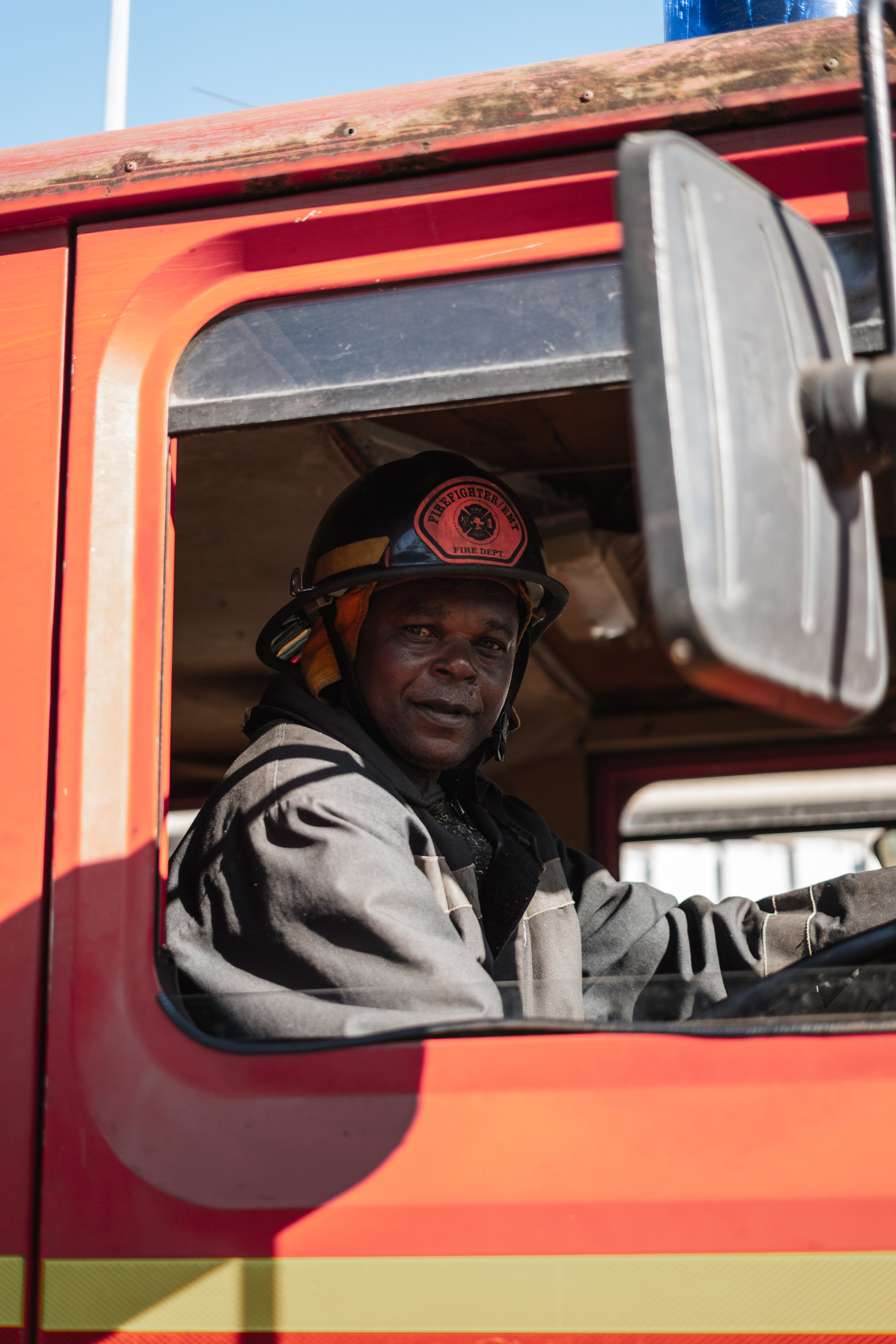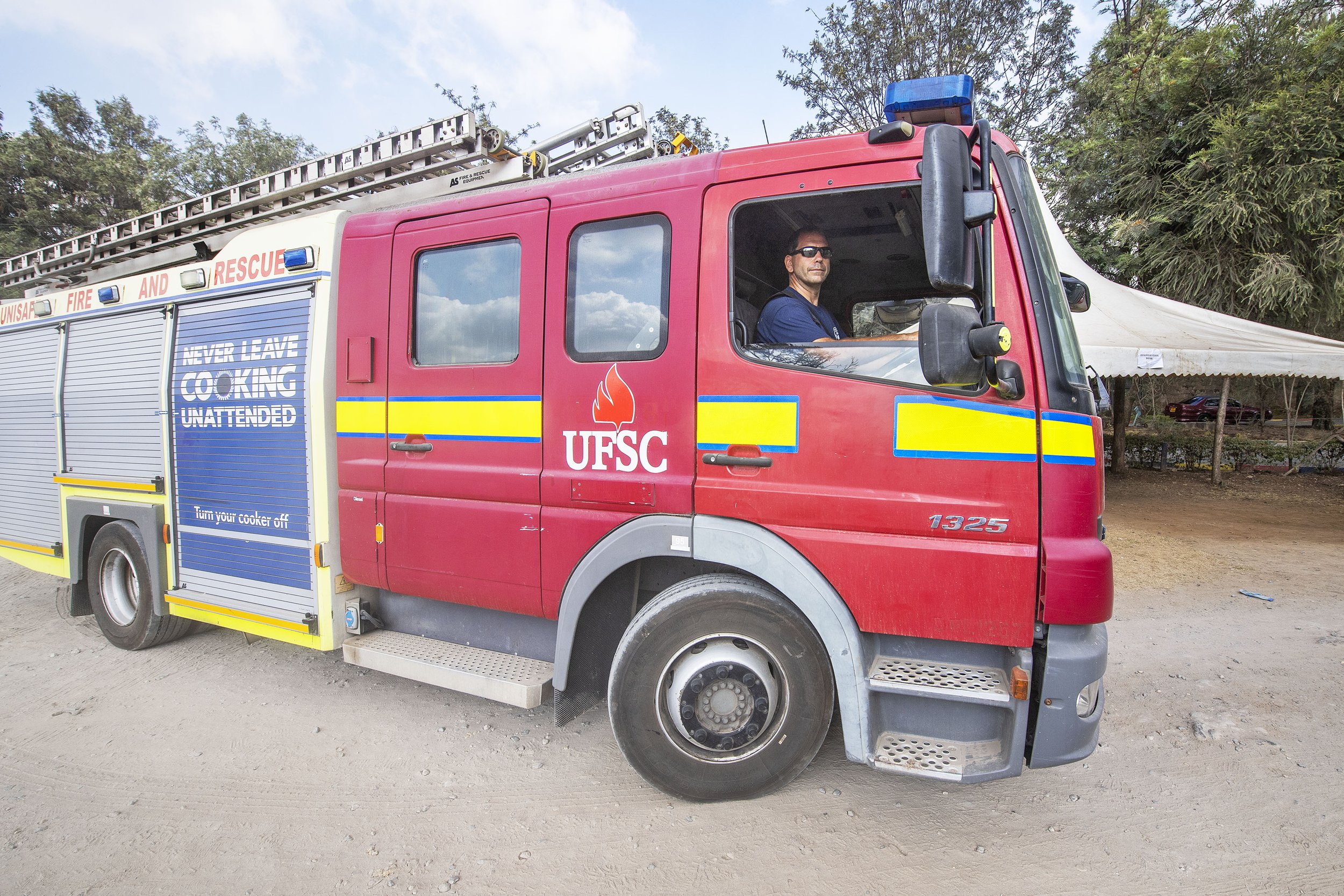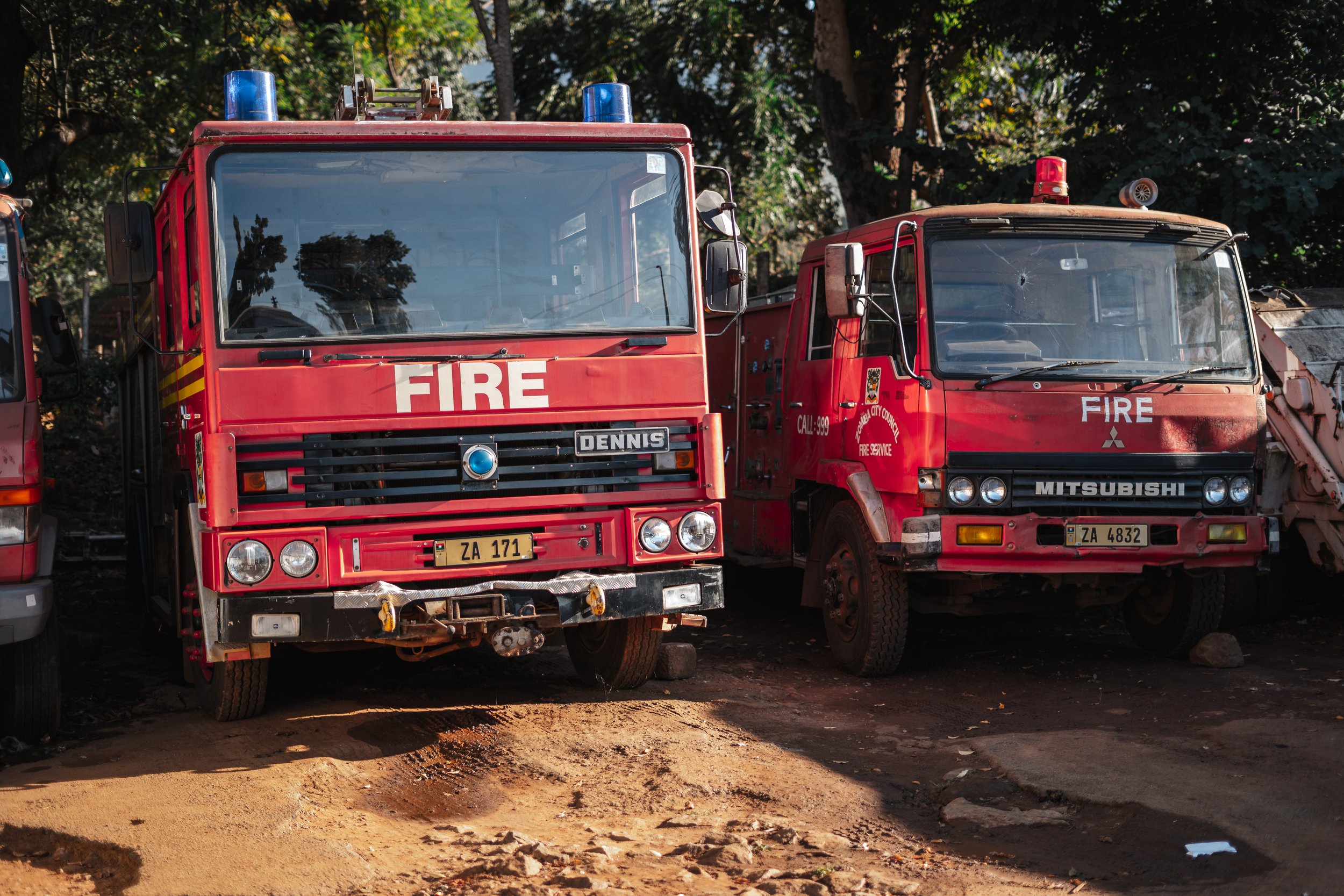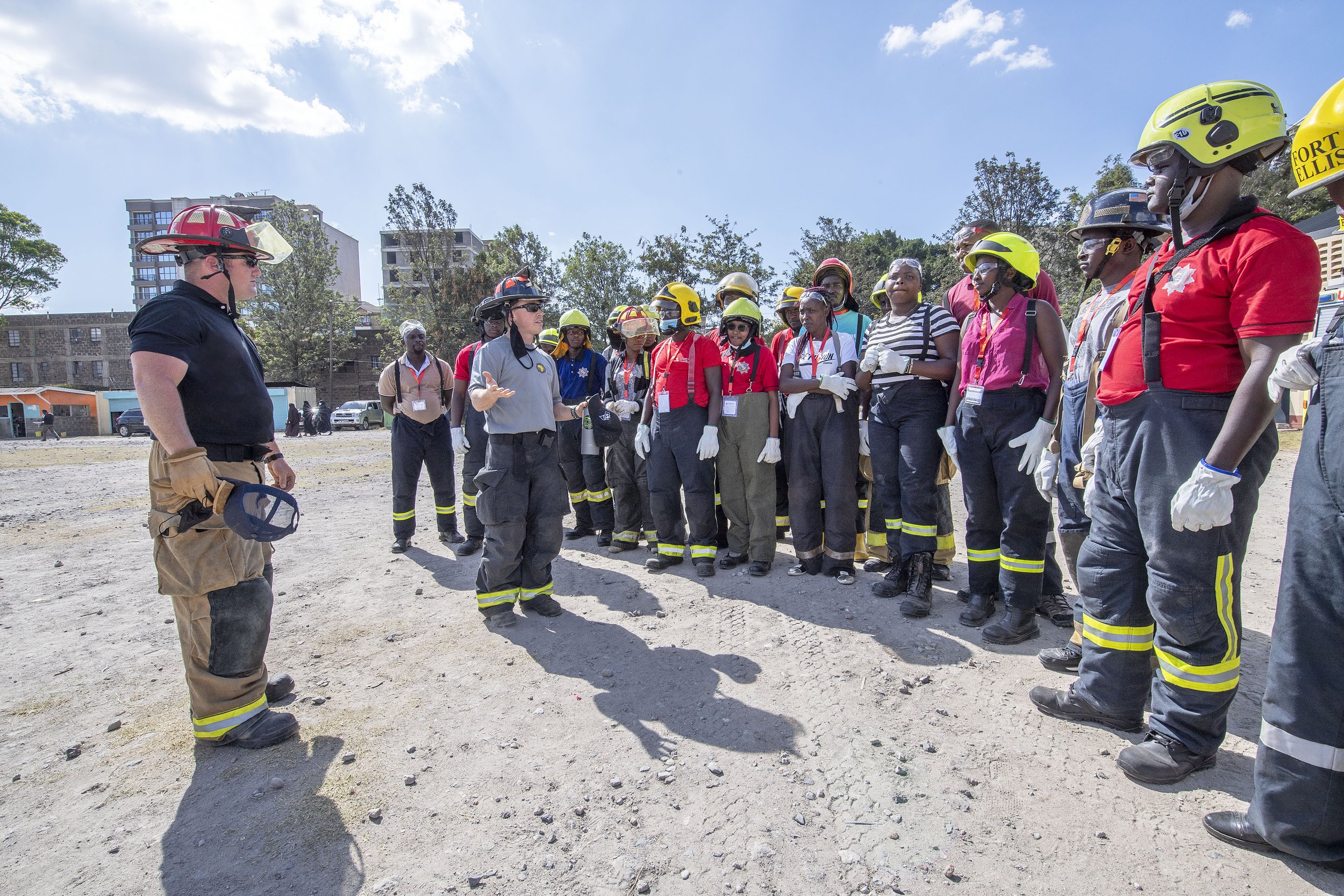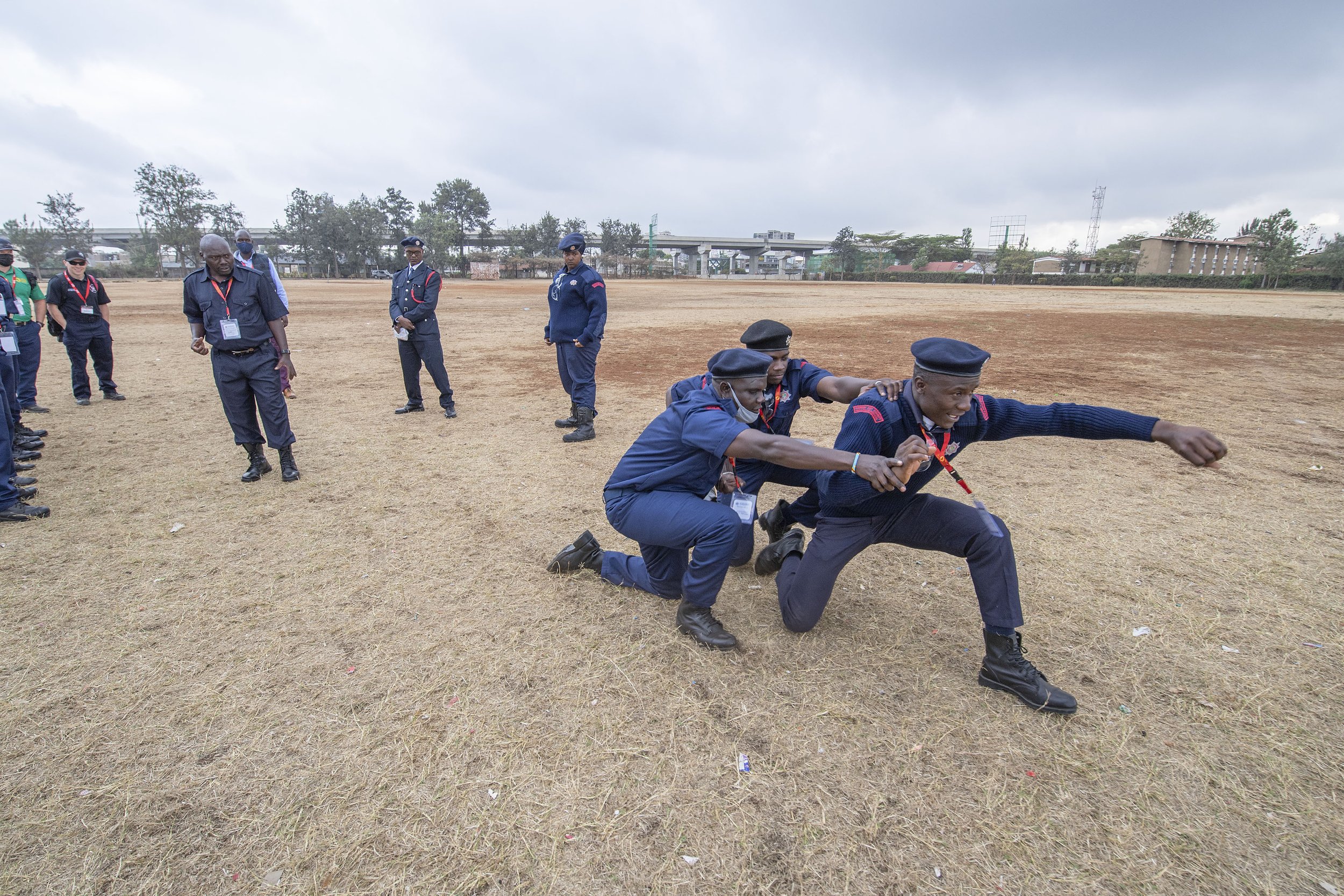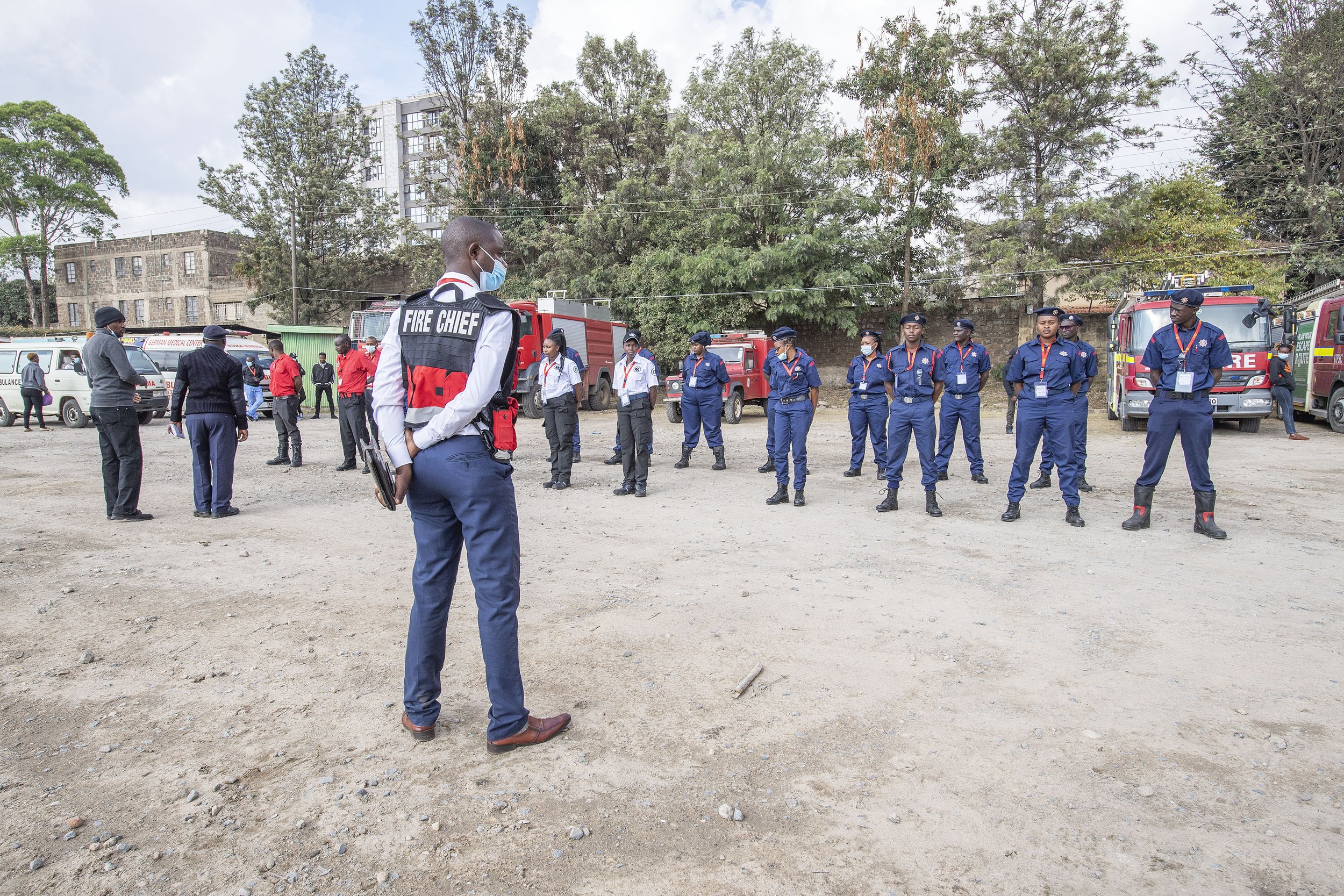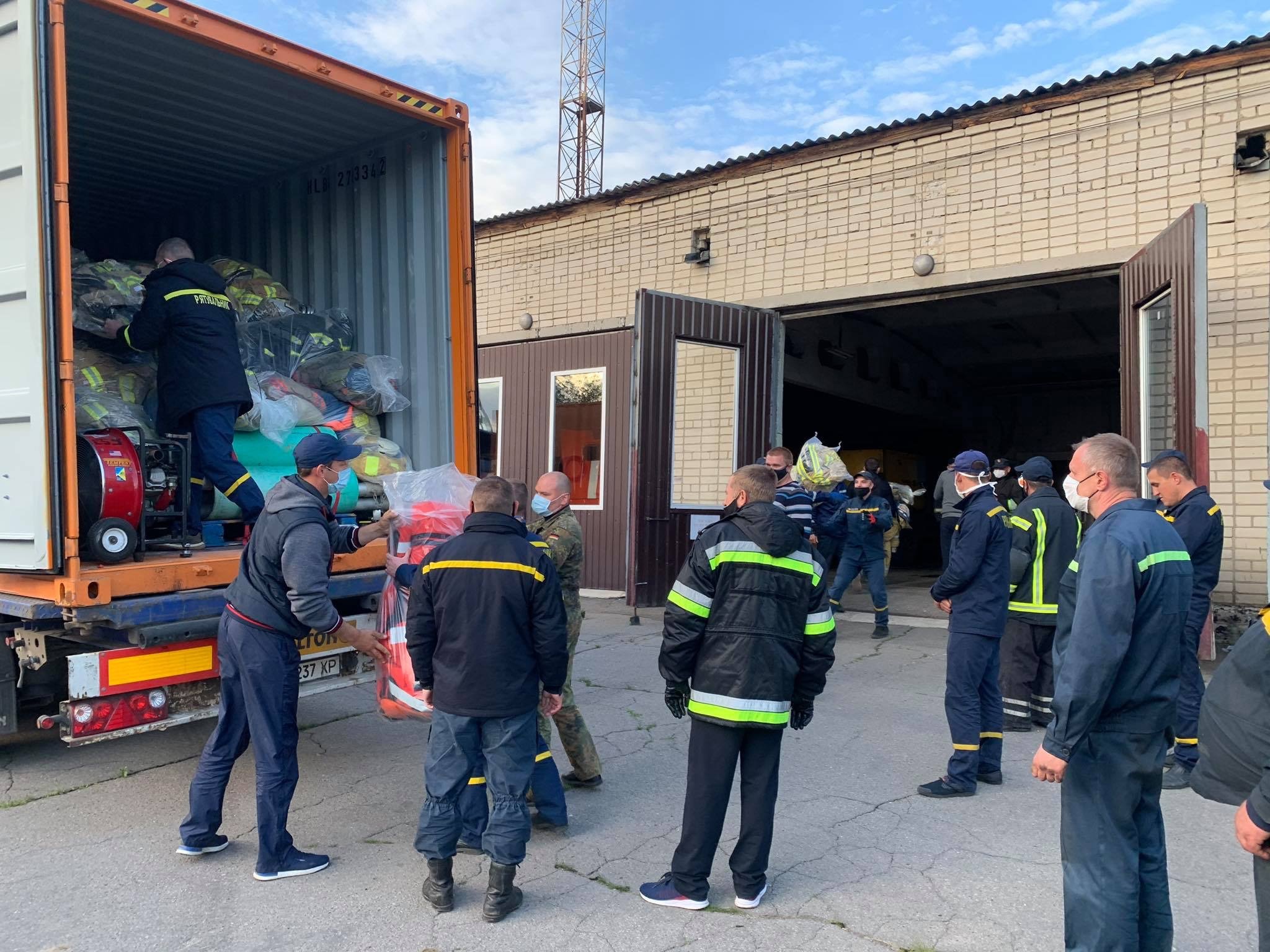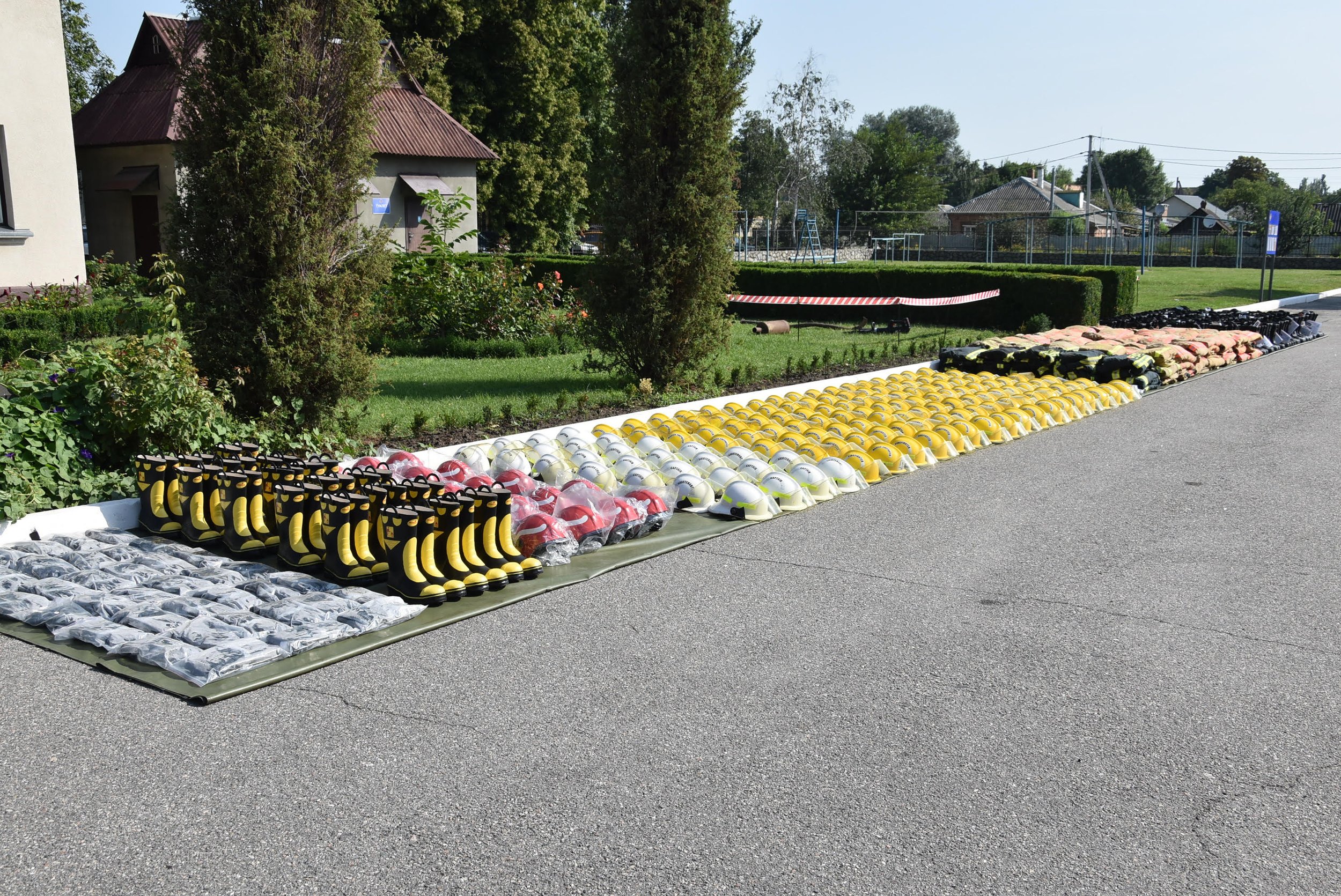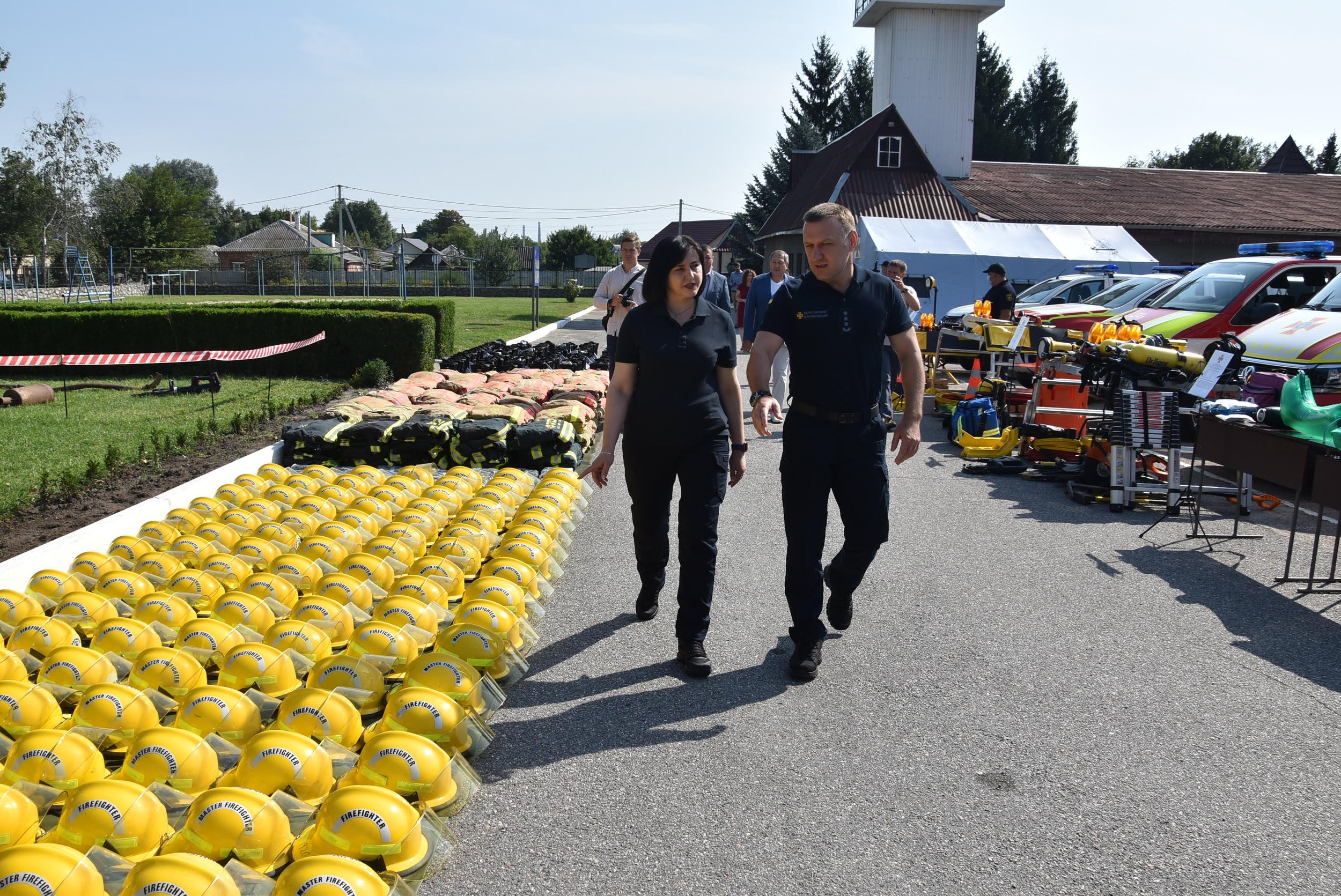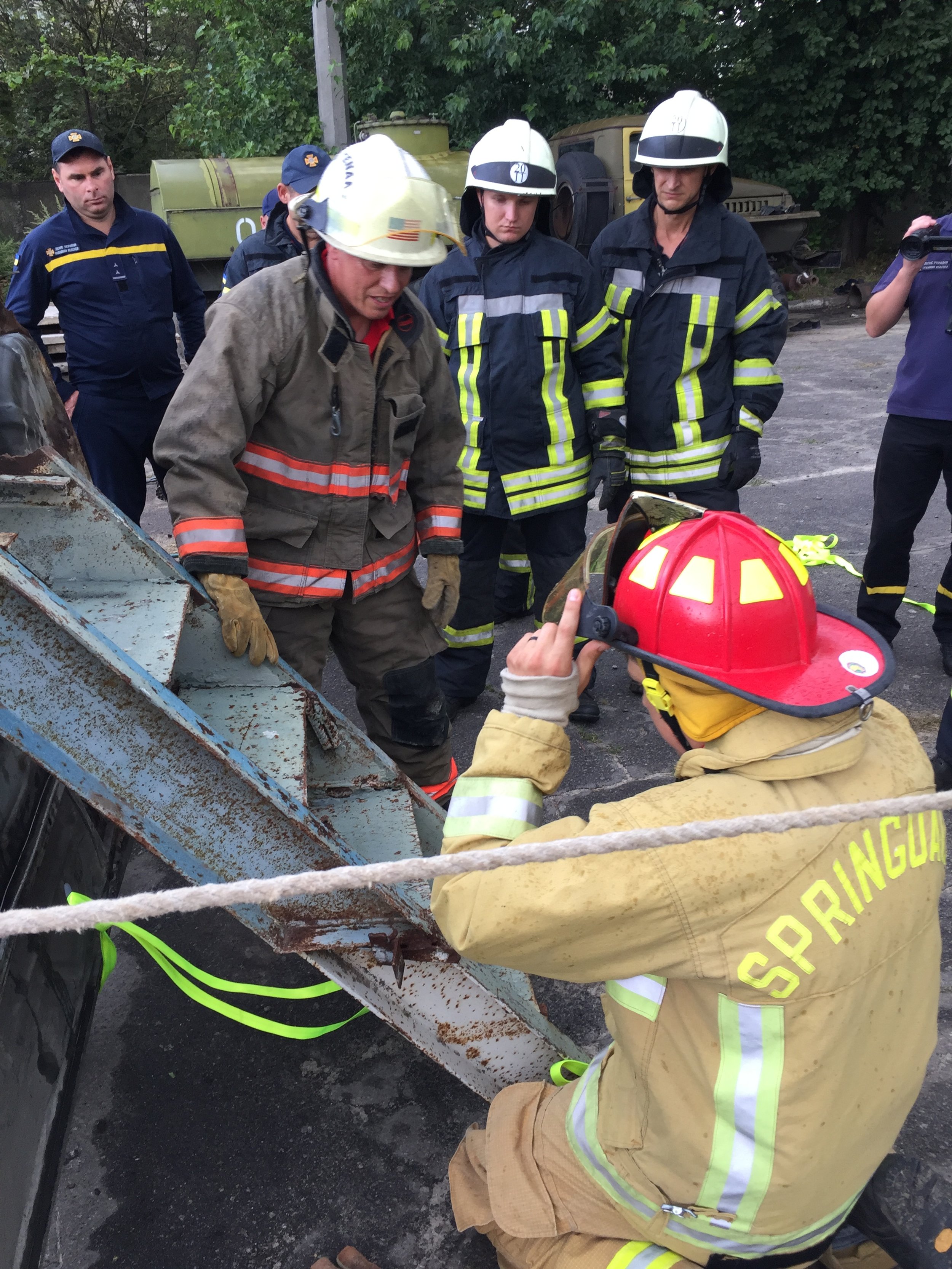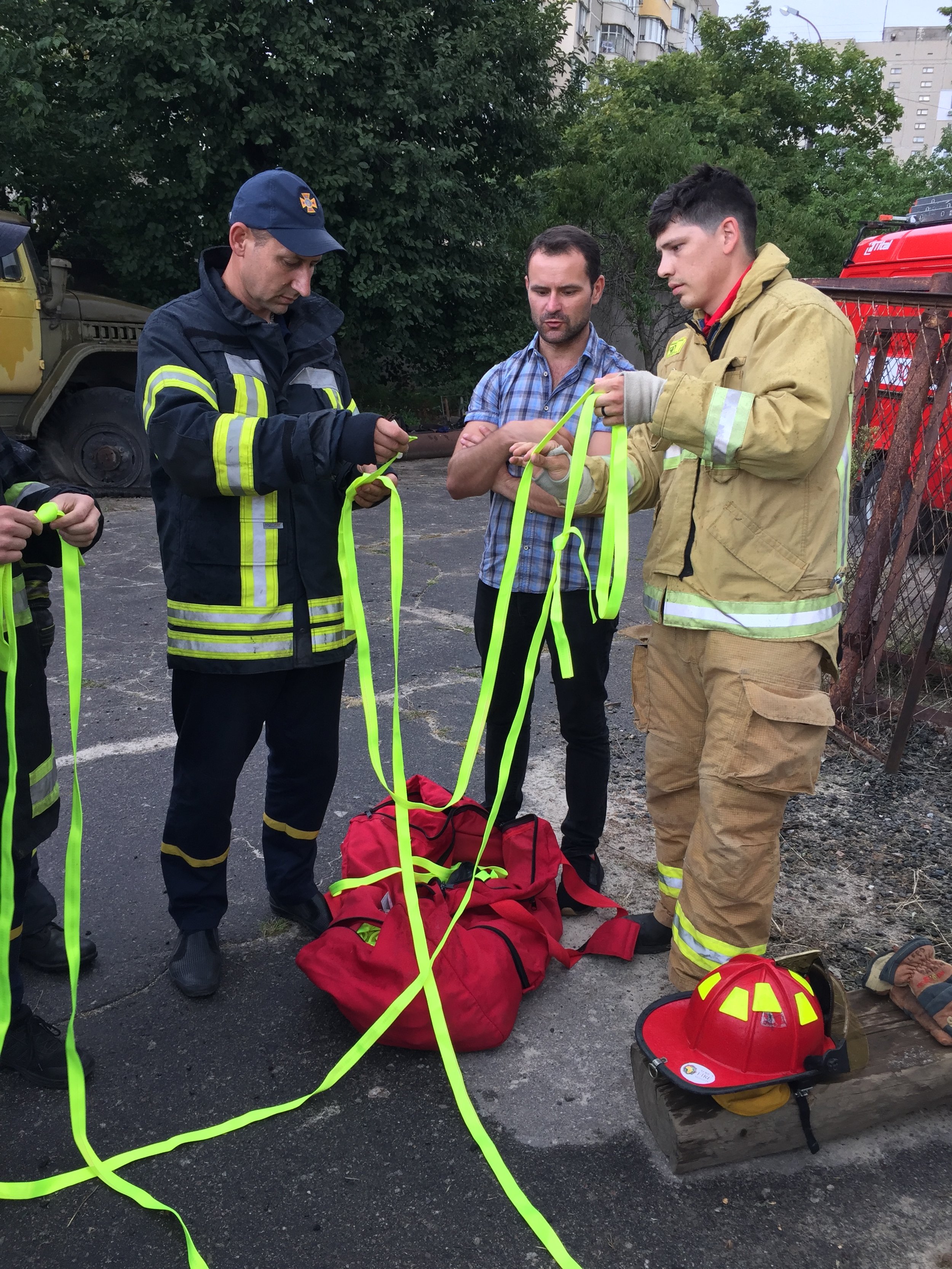June 5, 2023 a team of eight instructors for Africa Fire Mission set off from their homes in the United States, Germany, and Kenya. Our team members come from diverse experiences in the fire service.
We set off, with most team members having more than 30 hours of travel, to serve the firefighters in Malawi. There are 4 fire brigades in Malawi - Mzuzu, Lilongwe, Zomba and Blantyre and we were able to provide training at each station. After arriving in Malawi - our team divided into 2 smaller teams and traveled to each city.
Training topics and practical application was customized for each department and included: hazmat, rope rescue, hose management, ladders, interior search and rescue, CPR, first aid, and community fire prevention. While they were in Malawi the team went with the Fire Brigade to nearby schools and practiced showing the children fire safety!
Our team found it encouraging to see how the firefighters had furthered their trainings form our work in 2022 and improved their skills. Firefighters in Malawi work so hard and deserve the respect that they are gaining from their communities! Chief Mike Kull said, "It is such a pleasure working and training with these firefighters who are so dedicated to their profession and so willing to learn and train." Additionally, we were able to donate 15 sets of PPE to the firefighters this year and are making arrangements with the help of Malawi Goodlife to send more equipment to the fire service from Germany.
Chief Mike Kull trained in Blantyre and Zomba and blogged about his experience. If you’d like to read more about AFM’s mission to Malawi, check out Chief Kull’s blog: Far Off Chief.

